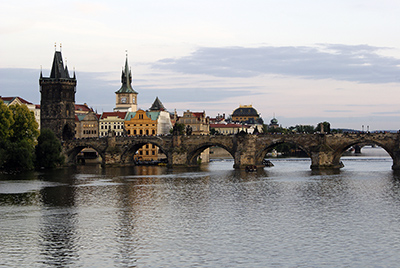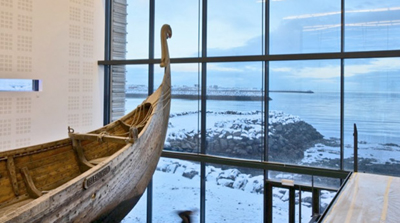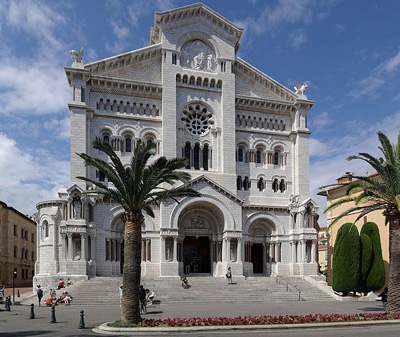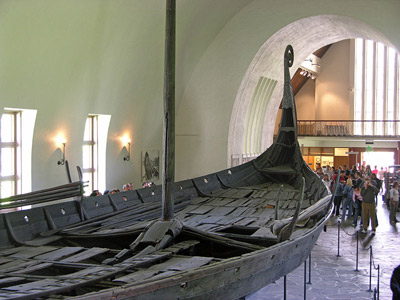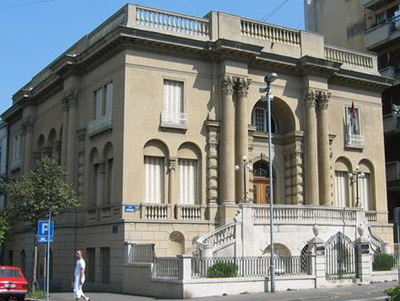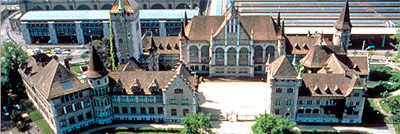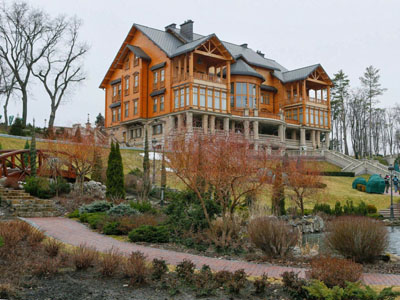Europe's Top 500 Museums and World Heritage Sites
Austria
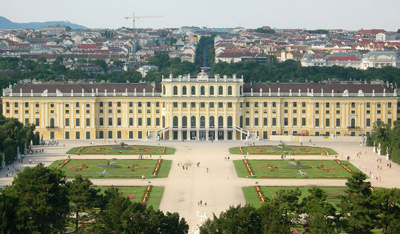 - Austria is giving Hitler's birthplace a $5.6M facelift - "Austrian architects will transform Hitler's birthplace into a police station."
- Historical Hitler Sites: Vienna (46) - The Hitler Pages.
- List of historical sites associated with Ludwig van Beethoven - Wikipedia.
- LIST OF MUSEUMS IN AUSTRIA - Wikipedia.
- MUSEUMS IN AUSTRIA BY CATEGORY
- Origins of the 30000-year-old Venus of Willendo solved - "The Venus of Willendorf is a 4.4-inch Venus figurine, found in 1908 at a Palaeolithic site near Willendorf, a village in Lower Austria. In a new study published by the University of Vienna in collaboration with Vienna’s Natural History Museum, researchers applied high-resolution tomography, suggesting that the Venus originates from a region in northern Italy."
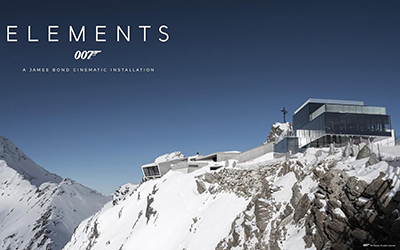 - 007 Elements Cinematic Installation - since July 12, 2018. "The brand new James Bond Installation in Sölden, Austria stands for a cinematic peak experience. Where Daniel Craig was in front of the camera for the Spectre movie shooting, visitors will experience an unprecedented highlight for film enthusiasts from 12 July 2018 onwards. It will lead deep into the cinematic universe of the planet's most famous Secret Agent." Bergbahnen Sölden, Dorfstraße 115, 6450 Sölden, Austria.
- Ambras Castle - renaissance castle and palace located in the hills above Innsbruck.
- BEETHOVEN PASQUALATIHAUS - altogether Ludwig van Beethoven worked in Vienna for thirty-five years. Thereof he spent eight years living in this apartment on the fourth floor. Mölker Bastei 8, Vienna.
- BEETHOVEN WOHNUNG HEILIGENSTADT - this house in the Vienna suburb of Heiligenstadt is dedicated to a crucial and devastating event in the life of Ludwig van Beethoven. It recalls the "Heiligenstädter Testament" he wrote in 1802 – the letter to his two brothers which he never sent and in which he expressed his despair over his advancing deafness. Probusgasse 6, Vienna.
- Belvedere - historic building complex in Vienna, Austria, consisting of two Baroque palaces (the Upper and Lower Belvedere), the Orangery, and the Palace Stables. The buildings are set in a Baroque park landscape in the third district of the city, on the south-eastern edge of its centre. It houses the Belvedere museum.
- burg hochosterwitz - outstanding example of a medieval fortress and stronghold. Launsdorf.
- Eggenberg Palace - in Graz is the most significant Baroque palace complex in Styria. With its preserved accouterments, the extensive scenic gardens as well as some additional collections from the Universalmuseum Joanneum housed in the palace and park, Schloss Eggenberg counts among the most valuable cultural assets of Austria.
- esterhÁzy palace - one of the most beautiful baroque palaces in Austria. Eisenstadt.
- HAYDNHAUS - Joseph Haydn (1732-1809) spent the last twelve years of his life in Gumpendorf, at that time an outlying village of Vienna. Having bought his house between two periods of stay in England, he extended it by one floor, moving in aged 65 in 1797. Haydngasse 19.
- Hofburg Palace - palace located in Vienna, Austria, that has housed some of the most powerful people in European and Austrian history, including the Habsburg dynasty, rulers of the Austro-Hungarian Empire. It currently serves as the official residence of the President of Austria. It was the Habsburgs' principal winter residence, as the Schönbrunn Palace was their preferred summer residence.
- Jewish Museum Vienna - museum of Jewish history, life and religion in Austria.
- JOHANN STRAUSS WOHNUNG - in 1867 in this apartment, Johann Strauss composed the world-famous waltz "The Blue Danube", Austria's "unofficial national anthem"! Strauss lived seven years on Praterstrasse, then a fashionable and elegant Viennese suburban street. Praterstraße 54 .
- Kaiservilla - the little town of Bad Ischl in Upper Austria, the former summer capital of the great Austro-Hungarian Monarchy, has been associated with the Habsburg imperial dynasty for at least 700 years. The Imperial Villa in Ischl, the Emperor's summer residence, was described by Franz Josef I as "heaven on earth" for himself and his family.
- MOZARTHAUS VIENNA - Mozart's residence from 1784 to 1787. This building in Vienna's Old Town, not far from St. Stephen's Cathedral, is his only surviving Viennese residence and is now a museum. Domgasse 5.
- Museum of Military History - (Heeresgeschichtliches Museum), Vienna.
- Museum of Natural History of Vienna - one of the important museums of the world, and the earliest collections of artifacts were begun over 250 years ago. The museum houses approximately 30 million objects.
- Schloss EsterhÁzy - palace in Eisenstadt, the capital of the Burgenland state. It was constructed in the late 13th century, and came under ownership of the Hungarian Esterházy family in 1622.
- SCHÖNBRUNN PALACE - former imperial 1,441-room Rococo summer residence in modern Vienna, Austria. One of the most important cultural monuments in the country. The palace and gardens illustrate the tastes, interests, and aspirations of successive Habsburg monarchs.
- SCHUBERT GEBURTSHAUS - this is the house where the great composer Franz Schubert was born on 31 January 1797. Nußdorfer Straße 54.
- SCHUBERT STERBEWOHNUNG - perhaps the most poignant of all the Wien Museum’s composer memorials is the house where Schubert died near Naschmarkt. Franz Schubert lived here for several weeks as his brother's guest in an apartment consisting of two rooms and a cabinet study on the second floor of the Biedermeier house, until his death on 19 November 1828. Here he composed his last works, among them the song "The Shepherd on the Rock". Kettenbrückengasse 6.
- Sigmund Freud Museum - Since 1971, the Sigmund Freud Museum has been welcoming visitors in Sigmund Freud's former office and apartment. Berggasse 19.
- Tabula Peutingeriana - (Latin for "The Peutinger Map"), also referred to as Peutinger's Tabula or Peutinger Table, is an illustrated itinerarium (an ancient Roman road map) showing the layout of cursus publicus, the road network in the Roman Empire. The map is today kept at the Austrian National Library in Vienna.
Belgium
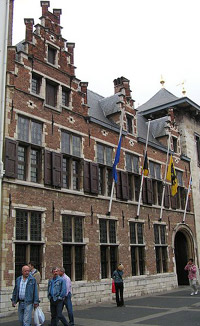 - LIST OF MUSEUMS IN BELGIUM - Wikipedia.
- MUSEUMS IN BELGIUM BY CATEGORY
- The museum of everything: do you have time to look at 150,000 exhibits? - "In a world first, Rotterdam’s Boijmans museum has put its entire collection on display in a mammoth new warehouse. As the V&A considers a similar experiment, is this ‘open storage’ model the future?"
 - Church of Our Lady, Bruges - dates mainly from the 13th, 14th and 15th centuries. This church is essentially "...a monument to the wealth, sophistication, taste, and devotion of this most Catholic city, whose history and faith stand today celebrated in this wonderful building." Its tower, at 115.6 metres (379 ft) in height, remains the tallest structure in the city and the second tallest brickwork tower in the world (after St. Martin's Church in Landshut, Germany).
- MUSÉE HERGÉ - Louvain-la-Neuve.
- MAS | Museum Aan de Stroom - Antwerp. The main themes of the MAS are Metropolis, Power, Life and Death, and Antwerp's long history as a major international port.
- Royal Army and Military History Museum - Jubelpark 3, Brussels.
- Royal Museum for Central Africa - since 1898. Colloquially known as the Africa Museum, is an ethnography and natural history museum situated in Tervuren in Flemish Brabant, just outside Brussels. It was built to showcase King Leopold II's Congo Free State in the 1897 World Exhibition.
- THE RUBENS HOUSE - Antwerp.
Denmark
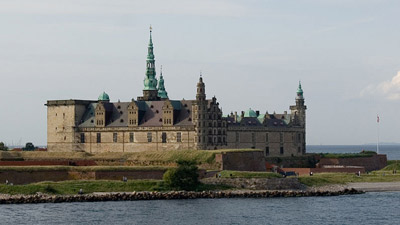 - BØrsen fire: Denmark endures its own Notre Dame devastation - "Alarm bells first rang out early on Tuesday morning as fire ripped through Copenhagen's historic former stock exchange building, Børsen. Within no time at all the inferno had gutted large parts of the 400-year-old structure and toppled the ornate spire known for its distinctive dragons."
- Copenhagen's historic stock exchange in flames - "Denmark's historic old stock exchange building in the centre of Copenhagen has been engulfed by fire."
- Danish Culture Canon - consists of 108 works of cultural excellence in eight categories: architecture, visual arts, design and crafts, film, literature, music, performing arts, and children's culture. An initiative of Brian Mikkelsen in 2004, it was developed by a series of committees under the auspices of the Danish Ministry of Culture in 2006–2007 as "a collection and presentation of the greatest, most important works of Denmark's cultural heritage."
- LIST OF MUSEUMS IN DENMARK - Wikipedia.
- MUSEUMS IN DEMARK BY CATEGORY - Wikipedia.
- AMALIENBORG - The Royal Danish Collection - Amalienborg Palace, Christian VIII's Palæ.
- Bishop Absalon’s Castle & Copenhagen Castle - the ruins beneath the present Christiansborg Palace.
- Christiansborg Palace - in the centre of Copenhagen has more than 800 years of history as the power base of the kingdom. Today the palace is home to the Parliament. Many parts of the palace are open to the public.
- Danish War Museum - museum of military history & arms on Slotsholmen (next to Christiansborg Palace) in central Copenhagen. The collections of weapons are some of the most extensive in the world. More than 8000 swords, pistols, armours, machine guns and other weapons and military attributes are displayed in the museum's Great Gallery and the Canon Galley boasts more than 300 canons dating from the 16th century to present days.
- Designmuseum Denmark - since 1890. Denmark's largest museum for Danish and international design and a central exhibition forum for industrial design and applied arts in Scandinavia. Bredgade 68, Copenhagen.
- EGESKOV CASTLE - 5772 Kværndrup, Funen. The castle is Europe's best preserved Renaissance water castle.
- Finn Juhl's House - from 1941 to 1942 furniture designer Finn Juhl designed and furnished his own house next door to Ordrupgaard Art Museum. The house is one of the first functionalistic one-family houses in Denmark. Here Finn Juhl lived until his death in 1989. Finn Juhl’s widow left the house and its interior unchanged. On April 3, 2008 the house opened as a separate, additional part of Ordrupgaard Art Museum.
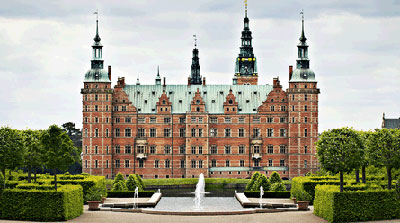 - Frederiksborg Palace - the museum of national history. 3400 Hillerød, North Zealand.
- GLYPTOTEK - museum of ancient & modern art.
- Hans Christian Andersen Museum - Odense, Funen.
- Karen Blixen Museum - Rungstedlund, 2960 Rungsted Kyst, North Zealand. Karen Blixen lived there for most of her life. She was born on the estate in 1885, and returned there after her years in Kenya, chronicled in her book Out of Africa, to do most of her writings.
- KRONBORG CASTLE - 3000 Helsingør (Elsinore), North Zealand. Immortalized as Elsinore in William Shakespeare's play Hamlet, Kronborg is one of the most important Renaissance castles in Northern Europe-
- Maritime Museum of Denmark - 3000 Helsingør (Elsinore), North Zealand.
- MOESGÅRD MUSEUM - 8270 Højbjerg, Jutland. Both a regional museum and a dedicated museum for archaeology and ethnography.
- MUSEUM OF COPENHAGEN - "The Museum of Copenhagen wishes to kindle a desire for knowledge of the city, its past, present and future." Stormgade 18.
- NATIONAL MUSEUM OF DENMARK - Copenhagen. Denmark’s largest museum of cultural history, comprising the histories of Danish and foreign cultures, alike. It contains exhibits from around the world, from Greenland to South America. The museum covers 14,000 years of Danish history, from the reindeer-hunters of the Ice Age, Vikings and works of art created in praise of God in the Middle Ages, when the church played a huge role in Danish life.
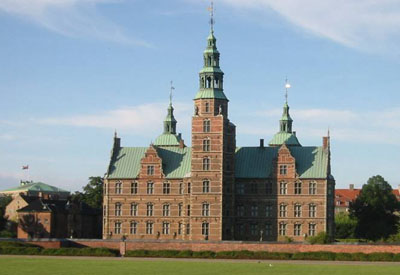 - Rosenborg Castle - renaissance castle located in Copenhagen.
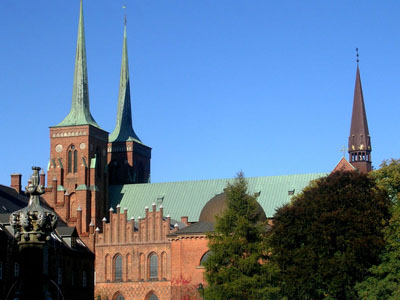 - ROSKILDE CATHEDRAL - 3000, Roskilde. The main burial site for Danish monarchs since the 15th century. Known as the church with the largest number of kings (20) and queens (17) buried in the world.
- The Crown Jewels - Rosenborg Castle.
- THE DAVID COLLECTION - Copenhagen. Particularly noted for its collection of Islamic art from the 8th to the 19th century, which is one of the largest in Northern Europe.
- THE MUSEUM OF NATIONAL HISTORY - Frederiksborg Castle, Hillerød north of Copenhagen.
- The Theatre Museum at The Court Theatre - behind the Danish Parliament Christiansborg.
- THORVALDSENS MUSEUM - Copenhagen. Single-artist museum dedicated to the art of Danish neoclassicistic sculptor Bertel Thorvaldsen (1770–1844).
England, U.K.
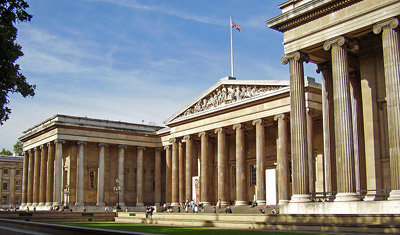 - 10 best stately homes in UK - with number 1 once owned by King Charles - "With over 3,000 stately homes in the UK, we're spoiled for choice when it comes to visiting properties draped in finery and oozing grandeur. Here are 10 of the most unique residences."
- 20 great British wonders that aren't World Heritage Sites - The Telegraph.
- 22 of our favourite secret British interiors - The Telegraph.
- Blue plaque - since 1866. Permanent sign installed in a public place in the United Kingdom and elsewhere to commemorate a link between that location and a famous person or event, serving as a historical marker. The oldest of its kind in the world.
- Britain's 14 most beautiful churches - The Telegraph.
- Britain's 15 best stately homes - The Telegraph.
- Britain's equivalent to Tutankhamun found in Southend-on-Sea - "Burial chamber of a wealthy nobleman in Prittlewell shows Anglo-Saxon Essex in new light."
- British Museum, London: China’s Hidden Century review - how opium & Christianity demolished a civilisation - "From Looty the stolen dog to the story of the last emperor, via glittering gowns and bloody rebellions, this show has a shock round every corner."
- British Museum receives donation of Chinese ceramics worth $1.27 billion - "The British Museum said on Wednesday it would receive 1,700 pieces of world-renowned Chinese ceramics worth around 1 billion pounds ($1.27 billion), in the largest donation in its nearly 300-year history. The collection, which has been on loan to the British Museum since 2009, has been donated by the Percival David Foundation."
- Does a cave beneath Pembroke Castle hold key to fate of early Britons? - "Scientists hope wealth of prehistoric material in Wogan Cavern in Wales is well preserved enough to reveal what really happened to our most ancient ancestors."
- Dramatic discovery links Stonehenge to its original site - in Wales - "Find backs theory that monument was dismantled and dragged over 140 miles to Wiltshire."
- ENGLISH HERITAGE
- Hadrian’s Wall is revealing a hidden side of Roman history - "While most of us think of Pompeii and Herculaneum if we’re thinking of everyday objects preserved from ancient Rome, this outpost in the wild north of the empire is home to some of the most extraordinary finds."
- Hadrian’s Wall Path - "Follow in the footsteps of Romans and trek alongside an ancient monument on a coast to coast walk across northern England."
- HISTORIC ROYAL PALACES - "We are the independent charity that loves and looks after six of the most wonderful palaces in the world."
- Hoard of silver coins dating from Norman Conquest is Britain’s most valuable treasure find ever - "The 2,584 silver pennies date from around 1066-1068, spanning one of the most turbulent periods in English history as the country was successfully invaded for the last time during the Norman Conquest."
- How science is uncovering the secrets of Stonehenge - "If you see the majestic stones on Salisbury Plain as an emblem of England, think again. A major new British Museum exhibition connects them to many points and cultures across Europe through 1,500 years of immigration."
- Legion: life in the Roman army - one of 'the most powerful' British Museum exhibitions - "This 'gripping' new exhibition explores how Rome built its vast empire 'on military might'. The only complete surviving legionary long shield on display."
- LIST OF MUSEUMS IN ENGLAND - Wikipedia.
- London's best historical pubs: the ultimate tour - The Telegraph.
- London's blue plaques - since 1866. "Across the capital over 950 plaques, on buildings humble and grand, honour the notable men and women who have lived or worked in them." Permanent sign installed in a public place in the United Kingdom and elsewhere to commemorate a link between that location and a famous person, event, or former building on the site, serving as a historical marker.
- London's 'lost' palaces - "A royal tour of London's best palaces and parks with historian Tracy Borman. From hidden spots at the Tower of London to the 'lost' and little-known Jewel Tower, Tracy Borman shares her tips and tricks for getting the most out of London's royal sites."
- Make the Most of the British Museum - The New York Times.
- Metal detectorists find 2,000-year-old Iron Age gold treasure in Welsh first - "The 15 coins, which have been declared treasure, are known as staters. They were found the Welsh island of Anglesey, off the northwest coast of the country’s mainland. Struck between 60 BC and 20 BC, the coins belonged to the Corieltavi tribe, who at the time inhabited the geographical area that is now England’s East Midlands, according to a National Museum Wales press release."
- MUSEUMS AROUND THE U.K. ON THE WEB
- MUSEUMS IN UNITED KINGDOM
- Over 100 previously unknown Iron Age settlements found north of Hadrian's Wall - "The 134 sites correspond to Indigenous settlements that date to Roman occupation. A study detailing the findings published Tuesday in the journal Antiquity."
- Parthenon: Colourful beauty of Parthenon marbles revealed in scientific analysis - "Innovative scanning techniques show painting of sculptures was potentially as intricate as their carving. Though the Parthenon marbles were admired for centuries for their stark white brilliance, it has long been known that the sculptures were originally brightly painted, before millennia of weathering, cannon bombardment, rough handling and overenthusiastic cleaning scoured them clean."
- Secret London: 14 odd attractions you never knew were there - The Telegraph.
- Secret World War II tunnels to open to public - "Plans have been revealed for what promises to be London’s most spectacular underground tourist attraction ever: the $268 million transformation of a mile-long series of World War II tunnels into a glitzy immersive experience."
- Silk Roads review - mesmerising show turns world history upside down - "The British Museum's mesmerising Silk Roads does, by showing how Asia, Europe and north Africa shared their cultures more than a millennium ago."
- Stonehenge megalith came from Scotland, not Wales, ‘jaw-dropping’ study finds - "In a discovery described by one of the scientists involved as 'genuinely shocking', new analysis has found that the largest 'bluestone' at Stonehenge was dragged or floated to the site from the very north-east corner of Scotland - a distance of at least 466 miles (about 750km)."
- Stonehenge: Rare lunar event to shed light on Stonehenge’s links to the moon - "The rising and setting of the sun at Stonehenge, especially during the summer and winter solstices, continues to evoke joy, fascination and religious devotion. Archaeologists and astronomers to study Wiltshire site’s lesser understood connection to the moon."
- The London Tunnels: What it’s like inside the secret World War II tunnels set to become a huge new tourist attraction - "The London Tunnels: A mile-long series of tunnels under Chancery Lane tube station in London is set to be turned into a major tourist attraction."
- THE ROYAL PARKS
- The secret underground bunker which helped win World War II - "Some 73 feet below the traffic and bustle of London's Piccadilly lies a silent warren of corridors and pitch-black rooms, rarely seen, rarely visited, but which played a vital role in the course of 20th-century history. Now, the opportunity has come round again to slip behind the door of the abandoned Down Street Tube station and descend by torchlight into the World War II hideaway from which campaigns such as the D-Day landings and the Dunkirk evacuation were coordinated."
- The secrets of London's most famous bridges - CNN travel.
- This is what Thomas Cromwell's 16th-century London mansion might have looked like - "The luxurious 16th-century London mansion that belonged to King Henry VIII of England's notorious chief minister, Thomas Cromwell, has been recreated for the first time."
- Triple-decker: how the Mary Rose had room for 500 men - "A new book shows how, to house its massive crew, Henry VIII’s favourite warship had one more deck than was originally thought."
- What happened to Stonehenge's missing stones? The archaeological mystery of Stonehenge's long-lost megaliths - "Around 4,500 years ago, the famous silhouette of Stonehenge would have looked very different. Writer and archaeologist Mike Pitts digs up clues to the mystery of the circle's long-lost stones."
- Why returning the Elgin Marbles to Greece would be madness - The Telegraph.
- Windsor Castle: The oldest & largest inhabited castle in the world with over 1,000 rooms - "Windsor Castle, located in Berkshire, has been home to British kings and queens for nearly 1,000 years. According to the Royal Collection Trust, it is the oldest and largest occupied castle in the world, and it's still a working royal residence today."
- ArcelorMittal Orbit - 114.5 metre (376 feet) tall sculpture and observation tower in the Queen Elizabeth Olympic Park in Stratford, London. It is Britain's largest piece of public art, and is intended to be a permanent lasting legacy of London's hosting of the 2012 Summer Olympic and Paralympic Games.
- Ashmolean Museum - Oxford. The world's first university museum.
- BANQUETING HOUSE - Whitehall, London.
- Battle of Waterloo - exhibition at National Army Museum, Chelsea, London.
- Blenheim Palace - Woodstock, Oxfordshire. Residence of the dukes of Marlborough. It is the only non-royal non-episcopal country house in England to hold the title of palace.
- Bletchley Park - Milton Keynes, Buckinghamshire. During the Second World War, Bletchley Park was the site of the United Kingdom's main decryption establishment, the Government Code and Cypher School (GC&CS), where ciphers and codes of several Axis countries were decrypted, most importantly the ciphers generated by the German Enigma and Lorenz machines.
- BRITISH MUSEUM - London. Dedicated to human history and culture. Its permanent collection, numbering some eight million works, is among the largest and most comprehensive in existence and originates from all continents, illustrating and documenting the story of human culture from its beginnings to the present.
- Brooklands Museum - "The Birthplace of British Motorsport and Aviation, Home of Concorde." Weybridge, Surrey.
- BUCKINGHAM PALACE - "The King's official London residence and a working royal palace." Official website.
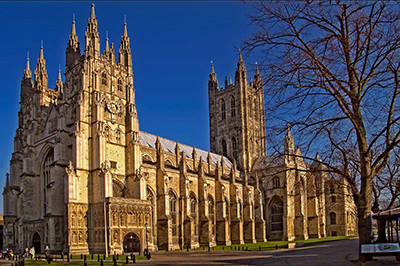 - CANTERBURY CATHEDRAL - one of the oldest and most famous Christian structures in England. Founded in 597, the cathedral was completely rebuilt from 1070 to 1077. The east end was greatly enlarged at the beginning of the twelfth century, and largely rebuilt in the Gothic style following a fire in 1174, with significant eastward extensions to accommodate the flow of pilgrims visiting the shrine of Thomas Becket, the archbishop who was murdered in the cathedral in 1170.
- CHANGING OF THE GUARD - the pomp and ceremony involved in the Changing of the Guard is a popular London tourist attraction.
- CHARRING CROSS - ince the second half of the 18th century Charing Cross has been seen as the centre of London. It is the primary of the central datum points for measuring distances from London along with the London Stone, Hicks Hall and the doors of St Mary-le-Bow church.
- Churchill War Rooms - museum in London and one of the five branches of the Imperial War Museum. The museum comprises the Cabinet War Rooms, a historic underground complex that housed a British government command centre throughout the Second World War, and the Churchill Museum, a biographical museum exploring the life of British statesman Winston Churchill.
- Coleridge Cottage - Nether Stowey, Somerset. Constructed in the 17th century as a building containing a parlour, kitchen and service room on the ground floor and three corresponding bed chambers above. The poet Samuel Taylor Coleridge lived here for three years from 1797. It was here that he wrote This Lime-Tree Bower My Prison, The Rime of the Ancient Mariner, part of Christabel, and Frost at Midnight.
- Crystal Palace Museum - London.
- Design Museum - London. The museum covers product, industrial, graphic, fashion &architectural design.
- DR. JOHNSON'S HOUSE - London. Home and workplace for Samuel Johnson 1748-1759.
- Eleanor crosses - were a series of twelve lavishly decorated stone monuments topped with tall crosses of which three survive nearly intact in a line down part of the east of England. King Edward I had the crosses erected between 1291 and 1294 in memory of his wife Eleanor of Castile, marking the nightly resting-places along the route taken when her body was transported to London.
- Fitzwilliam Museum - Cambridge.
- Fleet Air Arm Museum - "Europe's Largest Naval Aviation Collection." RNAS Yeovilton, Yeovil, Somerset, England, U.K.
- FOUNDLING MUSEUM - London.
- Freud Museum - "The final home of Sigmund Freud, the founder of psychoanalysis, and his daughter Anna Freud, a pioneering child psychoanalyst. 20 Maresfield Gardens, Hampstead, London."
- Glastonbury Abbey - monastery in Glastonbury, Somerset. Its ruins, a grade I listed building and scheduled ancient monument, are open as a visitor attraction. From at least the 12th century the Glastonbury area has been associated with the legend of King Arthur.
- GREAT BRITISH GARDENS - England, Northern Ireland, Scotland and Wales.
- HAMPSTEAD COURT PALACE - south west of London. It was originally built for Cardinal Thomas Wolsey, a favourite of King Henry VIII, circa 1514; in 1529, as Wolsey fell from favour, the palace was passed to the King, who enlarged it. The following century, King William III's massive rebuilding and expansion project intended to rival Versailles was begun. Work halted in 1694, leaving the palace in two distinct contrasting architectural styles, domestic Tudor and Baroque. While the palace's styles are an accident of fate, a unity exists due to the use of pink bricks and a symmetrical, if vague, balancing of successive low wings.
- Handel & Hendrix in London - 25 Brook St. "Separated by a wall & 200 years are the homes of two musicians who chose London & changed music."
- Highclere Castle - Highclere Park, Newbury, Hampshire. Highclere Castle is the main filming location for the British television period drama Downton Abbey.
- Hunterian Museum, Royal College of Surgeons - London. In 1799 the government purchased the collection of John Hunter which they presented to the College. This formed the basis of the Hunterian Collection, which has since been supplemented by others including an Odontological Collection and the natural history collections of Richard Owen. The museum displays thousands of anatomical specimens, including the Evelyn tables and the skeleton of the "Irish giant" Charles Byrne (231 cm tall), and many surgical instruments.
- HYDE PARK - one of London's finest landscapes and covers over 350 acres.
- Imperial War Museum - London. British national museum organisation with branches at five locations in England, three of which are in London. Founded as the Imperial War Museum in 1917, the museum was intended to record the civil and military war effort and sacrifice of Britain and its Empire during the First World War. The museum's remit has since expanded to include all conflicts in which British or Commonwealth forces have been involved since 1914. As of 2012, the museum aims 'to provide for, and to encourage, the study and understanding of the history of modern war and "wartime experience"'.
- KENWOOD HOUSE - Hampstead, London.
- King Richard III Visitor Centre - "Discover an incredible story at the King Richard III Visitor Centre." 4A St Martins, Leicester.
- King's College Chapel - "As well as being the most instantly recognizable and iconic building in Cambridge, King's College Chapel plays a central role in College life. It is the place where new students matriculate and where fellows are admitted and welcomed. We use the Ante-chapel for concerts on a regular basis, and very occasionally for lectures. The Chapel is the place where the choir records music for CDs and digital release on our own Recording Label." Cambridge.
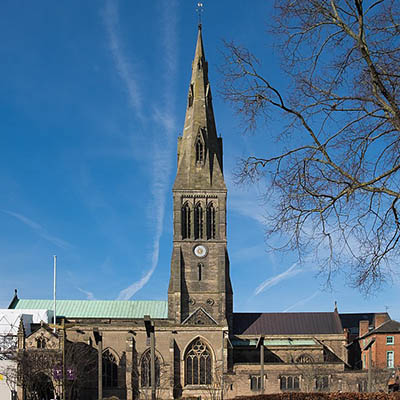 - Leicester Cathedral - the Cathedral Church of Saint Martin, Leicester, commonly known as Leicester Cathedral, is a Church of England cathedral in the English city of Leicester and the seat of the Bishop of Leicester. The church was elevated to a collegiate church in 1922 and made a cathedral in 1927 following the establishment of a new Diocese of Leicester in 1926. The remains of King Richard III were reburied in the cathedral in 2015 after being discovered nearby in the foundations of the lost Greyfriars chapel.
- Lindisfarne Gospels - British Library. London.
- LIST OF COUNTRY HOUSES - of historic / country houses, stately homes and estates, manors, and mansions in the United Kingdom.
- London Eye - giant Ferris wheel on the South Bank of the River Thames in London. Also known as the Millennium Wheel, its official name was originally the British Airways London Eye, then the Merlin Entertainments London Eye, and since January 2011, the EDF Energy London Eye. The entire structure is 135 metres (443 ft) tall and the wheel has a diameter of 120 metres (394 ft). It is currently Europe's tallest Ferris wheel, the most popular paid tourist attraction in the United Kingdom with over 3.5 million visitors annually, and has made many appearances in popular culture.
- LONDON STONE - 111 Cannon Street, London.
- London's 11 most notorious public execution sites - The Telegraph.
- MADAME TUSSAUDS - London.
- Model of the field of Waterloo with troops positioned as at 19.45 hours, 18 June 1815 - at National Army Museum, Chelsea, London.
- MUSEUM OF LONDON - since 1976. Documents the history of London from prehistoric to modern times.
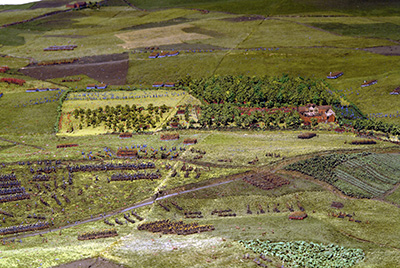 - National Army Museum - since 1960. Its remit for the overall history of British land forces contrasts with those of other military museums in the United Kingdom concentrating on the history of individual corps and regiments of the British Army. Chelsea, London.
- NATIONAL HISTORY MUSEUM - London. The museum is home to life and earth science specimens comprising some 70 million items within five main collections: Botany, Entomology, Mineralogy, Palaeontology and Zoology. The museum is a world-renowned centre of research, specialising in taxonomy, identification and conservation. Given the age of the institution, many of the collections have great historical as well as scientific value, such as specimens collected by Darwin.
- OFFICIAL GUIDE TO UK MUSEUMS, GALLERIES, EXHIBITONS & HERITAGE
- Oxford University Press Museum - "This small museum preserves and displays historic books, documents and printing equipment of the Oxford University Press."
- PARKER LIBRARY - Corpus Christi College, Cambridge University. A treasure house of Medieval and Renaissance manuscripts and early printed books, including the Bury Bible.
- Pitt Rivers Museum - Oxford. Displaying the archaeological and anthropological collections of the University of Oxford.
- Portsmouth Historic Dockyard - featuring the ships HMS Victory and HMS Warrior (1860) and the chance to learn about the Mary Rose ahead of launching a brand new museum.
- PUDDING LANE - street in London, formerly the location of Thomas Farriner's bakehouse where the Great Fire of London began in 1666.
- River and Rowing Museum - Henley-on-Thames, Oxfordshire. It has three main themes represented by major permanent galleries, the non-tidal River Thames, the international sport of rowing and the local town of Henley-on-Thames.
- ROYAL AIR FORCE MUSEUM
- ROYAL PAVILLION - Brighton.
 - Salisbury Cathedral - formally known as the Cathedral Church of the Blessed Virgin Mary, is an Anglican cathedral in Salisbury. The cathedral is regarded as one of the leading examples of Early English architecture. Its main body was completed in 38 years, from 1220 to 1258. Since 1549, the cathedral has had the tallest church spire in the United Kingdom, at 404 feet (123 m). Visitors can take the "Tower Tour", in which the interior of the hollow spire, with its ancient wooden scaffolding, can be viewed. The cathedral has the largest cloister and the largest cathedral close in Britain at 80 acres (32 ha). It contains a clock which is among the oldest working examples in the world, and has the best surviving of the four original copies of Magna Carta. In 2008, the cathedral celebrated the 750th anniversary of its consecration.
- Samuel Johnson Birthplace Museum - biographical museum and bookshop located in the centre of the city of Lichfield, Staffordshire The building is a Grade I listed building situated at the corner of Market Street and Breadmarket Street opposite the market square. The museum was opened in 1901 and contains an extensive library of manuscripts and books. The museum currently contains a varied mix of displays, reconstructed rooms and audio-visual media. Personal items include Johnson's armchair, tea set, breakfast table and portable writing desk, David Garrick's walking stick and a bookcase belonging to James Boswell.
- SCIENCE MUSEUM - London. Holds a collection of over 300,000 items, including such famous items as Stephenson's Rocket, Puffing Billy (the oldest surviving steam locomotive), the first jet engine, a reconstruction of Francis Crick and James Watson's model of DNA, some of the earliest remaining steam engines, a working example of Charles Babbage's Difference engine (and the latter, preserved half brain), the first prototype of the 10,000-year Clock of the Long Now, and documentation of the first typewriter. It also contains hundreds of interactive exhibits.
- Sir John Soane's Museum - Holborn, London. Formerly the home of the neo-classical architect Sir John Soane. It holds many drawings and models of his projects and the collections of paintings, drawings and antiquities that he assembled.
- St. Paul's Cathedral - London. Consecrated in 1708. Is a Church of England cathedral, the seat of the Bishop of London and mother church of the Diocese of London. It sits at the top of Ludgate Hill, the highest point in the City of London. Its dedication to Paul the Apostle dates back to the original church on this site, founded in AD 604. The present church, dating from the late 17th century, was designed in the English Baroque style by Sir Christopher Wren.
- STONEHENGE - English Heritage.
- Stonehenge: Rare lunar event to shed light on Stonehenge’s links to the moon - "The rising and setting of the sun at Stonehenge, especially during the summer and winter solstices, continues to evoke joy, fascination and religious devotion. Archaeologists and astronomers to study Wiltshire site’s lesser understood connection to the moon."
- Stonehenge tale gets ‘weirder’ as Orkney is ruled out as altar stone origin - "Weeks after revelation that megalith came from Scotland, researchers make surprise discovery."
- Temple Church - late 12th-century church in the City of London located between Fleet Street and the River Thames, built by the Knights Templar as their English headquarters.
- THE AMERICAN MUSEUM IN BRITAIN - Claverton Manor, Bath. The only museum of Americana outside the United States.
- The Anglo-Saxon ship burial at Sutton Hoo - "The interment of a ship at Sutton Hoo represents the most impressive medieval grave to be discovered in Europe."
- The Iron Bridge - bridge that crosses the River Severn in Shropshire. Opened in 1781, it was the first major bridge in the world to be made of cast iron, and was greatly celebrated after construction owing to its use of the new material.
- THE NATIONAL TRUST - "We look after historic houses, gardens, mills, coastline, forests, farmland, moorland, islands, castles, nature reserves, villages... and pubs."
- THE ROYAL COLLECTION - royal palaces, residences and art collection.
- THE SHERLOCK HOLMES MUSEUM
- THE STATE ROOMS AT BUCKINGHAM PALACE - London.
- The Wheatcroft Collection - large and important collection of historical softskin and armoured military vehicles. It is one of the largest private collection of military vehicles in the world and believed to be the world's largest collection of Nazi memorabilia.
- Tower Bridge Exhibition - London. "Built 120 years ago to ease road traffic while maintaining river access to the busy Pool of London docks. Built with giant moveable roadways that lift up for passing ships, it is to this day considered an engineering marvel and beyond being one of London’s favourite icons, it is arguably one of the most famous and instantly recognisable structures in the entire world."
- TRAILBLAZING - three and a half centuries of Royal Society publishing.
- TREWITHEN GARDEN - "An historic private estate boasting one of the loveliest gardens in England."
- VICTORIA AND ALBERT MUSEUM - London. The world's largest museum of decorative arts and design, housing a permanent collection of over 4.5 million objects. It was founded in 1852 and named after Queen Victoria and Prince Albert, the Prince Consort.
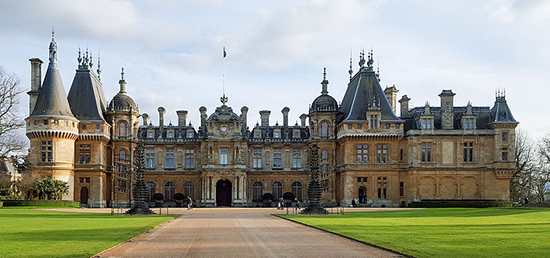 - Waddesdon Manor - country house in the village of Waddesdon, in Buckinghamshire. It is located in the Aylesbury Vale, 6.6 miles (10.6 km) west of Aylesbury. The Grade I listed house was built in the Neo-Renaissance style of a French château between 1874 and 1889 for Baron Ferdinand de Rothschild (1839–1898) as a weekend residence for grand entertaining and as a setting for his collection. The last member of the Rothschild family to own Waddesdon was James de Rothschild (1878–1957). He bequeathed the house and its contents to the National Trust.
- WINDSOR CASTLE - "Home to The Queen and over 900 years of royal history." Royal residence at Windsor in the English county of Berkshire. It is notable for its long association with the English and later British royal family and for its architecture.
France
 - 10 good reasons to visit ChÂteau de Vaux-le-Vicomte - "The Château de Vaux-le-Vicomte will astonish you! Find out why."
- A billion laser points helped bring Notre Dame back to life - "After a catastrophic fire five years ago, the Notre Dame Cathedral de Paris reopened this month looking almost the same as it did when it was first constructed in 1163. The massive reconstruction project was a testament not just to the hard work of the French people - but also to the lasers, drones and other advanced technology that gave rebuilders a window into the building’s past."
- A Miracle of Timing: The Statues That Escaped the Notre-Dame Fire - "Because they had been removed for restoration just days before, the 16 copper figures were spared from the fire."
- An exclusive look inside the destruction - and future - of Notre Dame - "Inside the Fight Over How Notre Dame Should Rise From the Ashes."
- Ancient sarcophagus found under Notre Dame cathedral in Paris - "Archaeologists said the lead sarcophagus probably belonged to a high dignitary and said it could date back to the 14th century, which - if confirmed - would make it a spectacular find."
- Architect unveils striking proposal for 'green' Notre Dame - "The rebuilt Notre Dame could feature a futuristic glass design, solar power, and an urban farm that supports vulnerable and homeless Parisians, if one architecture firm's vision is realized."
- Bayeux Tapestry: Archaeologists uncover ‘lost’ home depicted in the Bayeux Tapestry - "Bosham is named on the Bayeux Tapestry, but the exact location of Harold’s residence depicted on the embroidery has not been clear."
- Bayeux Tapestry to close to public for two years - "Visitors keen to see this legendary example of propaganda art will have to get their trip in before 7 p.m. local time on August 31, 2025, as the museum is set to close until October 2027 for a major renovation and conservation project."
- Bee-wildering! Hives of Notre-Dame in miraculous survival - AFP.com.
- Crown of Thorns returns to Notre-Dame Cathedral after fire - "An ancient relic said by some to have been placed on the head of Jesus Christ at his crucifixion has returned to Notre-Dame, five years after it was saved from a fire that devastated the cathedral in Paris. The crown was acquired by King Louis IX of France in Constantinople in 1239 for 135,000 livres - nearly half France's annual expenditure at the time."
- Eerily Empty Louvre: What It’s Like When Floods Keep Tourists Away - The New York Times.
- Eiffel Tower is reportedly badly in need of repairs - "The Eiffel Tower is riddled with rust and in need of full repairs, but instead it is being given a cosmetic 60 million euro paint job ahead of the 2024 Olympic Games in Paris, according to confidential reports cited by French magazine Marianne. The wrought-iron 324-meter (1,063 ft) high tower, built by Gustave Eiffel in the late 19th century, is among the most visited tourist sites in the world, welcoming about six million visitors each year."
- Eiffel Tower reopens to visitors after strike by workers who complained of rust - "Paris attraction was closed for six days after union criticised operator for seeking ‘short-term profitability’. The Eiffel Tower has reopened to visitors after a six-day strike by employees demanding changes to the landmark's business model and better maintenance of the 330m (1,083ft) structure, which is showing widespread traces of rust."
- European Heritage Days - French Ministry of Culture and Communication.
- Fontainebleau: A Forgotten Treasure - The New York Times.
- French museum discovers half of its collection are fakes - The Telegraph.
- How fire changed Notre-Dame’s unique voice - "'The space is like an instrument': How Notre-Dame found its voice after fire muffled it. Performers and visitors to the famous gothic cathedral in the midst of the River Seine may find some subtle differences to the way sound bounces around its walls."
- How Notre Dame was restored - in pictures, videos & maps - "From piles of rubble and soot, the centuries-old cathedral has re-emerged five years after the fire thanks to an army of skilled workers led by a retired general. Here’s how they did it."
- How Notre Dame's treasures were saved - "How centuries of priceless treasures were saved at Notre Dame."
- How to Navigate Paris's Louvre Museum Like a Pro - "The World's Greatest Museum Is Also the Most Intimidating - Here's How to Navigate the Louvre Like a Pro. A Paris-based art lover offers advice on how to explore the world's greatest museum."
- In pictures: Notre Dame’s breathtaking restoration five years after fire - "Thousands of artisans, engineers, carpenters and other craftspeople came together to resurrect the beloved UNESCO world heritage site. The limestone walls have been methodically cleaned, while numerous other architectural elements and centuries-old relics meticulously restored."
- Inside Notre Dame, Paris’ Gothic gem, as it reopens to the world - "Five years after it was nearly destroyed in a devastating fire, Notre Dame de Paris formally reopened on Saturday with a two-hour ceremony inside the famed cathedral’s gleaming, newly renovated interior."
- Leonardo da Vinci five centuries on: Louvre in Paris opens long-awaited exhibition - "It took more than a decade to prepare and was almost thwarted by a diplomatic row. Now, one of the world's most expensive art exhibitions - to commemorate the 500th anniversary of Leonardo da Vinci's death - is finally opening to the public."
- List of monuments historiques in Paris - "The term monument historique is a designation given to some national heritage sites in France. It may also refer to the state procedure in France by which National Heritage protection is extended to a building, a specific part of a building, a collection of buildings, garden, bridge, or other structure, because of their importance to France's architectural and historical cultural heritage. Both public and privately owned structures may be listed in this way, as well as also movable objects."
- LIST OF MUSEUMS IN FRANCE - Wikipedia.
- List of museums in Paris - Wikipedia.
- Lost at the Louvre? There’s an App for That - The New York Times.
- Louvre debuts its biggest ever Leonardo exhibition - "Biggest Leonardo da Vinci show ever opens (But without two key paintings)."
- Louvre museum in dire state, problems ‘endanger’ art, director warns in plea for help - "The Louvre, the world’s most-visited museum and home to Leonardo da Vinci’s 'Mona Lisa,' has requested urgent help from the French government to restore and renovate its ageing exhibition halls and better protect its countless works of art."
- Louvre's missing pyramid & the magic of trompe l’oeil - The Guardian.
- Lutetian Limestone - a variety of limestone particular to the Paris, France, area. It has been a source of wealth as an economic and versatile building material since ancient Roman times and has contributed markedly to the unique visual appeal of the “City of Light”. Between the 17th and 19th centuries, Lutetian limestone was extracted by tunneling through hill-sides south of Paris. The stone comprises many of the grandest Paris buildings from the 17th century onwards, including parts of the Louvre, the Place de la Concorde and Les Invalides.
- Make the Most of the Louvre - The New York Times.
- Marcel Proust’s different home addresses - Hôtel Littéraire le Swann.
- Marie Antoinette's Versailles apartments on display - "After three years of renovation, French Queen Marie Antoinette's apartments are to reopen to the public at the Château of Versailles."
- Mona Lisa is moving - what does it take to keep her safe? - "She's one of the world's most recognisable faces, with a smile that's been printed on mugs, bags and T-shirts across the globe. But she's only left her country a handful of times, and has stayed in the same room for 14 years."
- Mona Lisa to Get Her Own Room as the Overcrowded Louvre Expands - "President Emmanuel Macron announced plans to alleviate crowds at the Paris museum and to charge higher fees for visitors from outside the European Union. Also, the Louvre Museum in Paris will move the Mona Lisa to a newly created exhibition space."
- MUSEUMS IN FRANCE BY CATEGORY
- Notre Dame & the culture it inspired - from Matisse to the Muppets - "It mesmerised Proust, terrified Homer Simpson and gave us the Hunchback - Guardian critics celebrate Paris’s gothic masterpiece at the heart of the modern imagination."
- Notre-Dame Cathedral on track to reopen in 2024 - "The Notre-Dame Cathedral is on track to open its doors to worshippers and the public in 2024, says France's culture minister. The 13th Century Paris monument caught fire in April 2019, sparking a vast outpouring of emotion. Since then, a huge restoration project has been carried out aiming to restore it to its previous design."
- Notre Dame: Cathedral's spire will be restored to 19th Century design - "The spire of Notre Dame cathedral, which was destroyed in a fire last April, will be restored according to the original Gothic design. French President Emmanuel Macron announced the decision, putting an end to speculation that the spire would be rebuilt in a modern style."
- Notre Dame: Coronations, protests & tightrope artists: Iconic images from Notre Dame’s history ahead of reopening - "For hundreds of years, Notre Dame was the backdrop to some of French history’s defining moments. On Friday, the cathedral itself will play the lead role as France’s President Emmanuel Macron visits the building ahead of its official reopening the following weekend. It will be the first glimpse inside the gothic church returned to its former glory, after a devastating fire five years ago and a $700 million euro ($738 million) restoration project."
- Notre-Dame fire: Eight centuries of turbulent history - "The grief caused by the near-destruction of Notre-Dame may seem puzzling for a country as resistant to religion as France."
- Notre Dame fire: Fragile old lady of Paris waits for rescue - "When the wind blows around Notre Dame these days, strange, whistling chimes fill the air. A ghostly harmony made by the gaping holes in the old medieval structure, left by the fire exactly a year ago."
- Notre-Dame fire lead pollution endangered life, lawsuit claims - "Parisian authorities are facing legal action over the health threat from toxic lead particles released during the fire at the Notre-Dame Cathedral. Hundreds of tonnes of lead within the cathedral's roof melted during the blaze in 2019. It released toxic particles into the air, which settled in the local area."
- Notre Dame is back - but not quite as you knew her - "With the cathedral set to open to the public on December 8, even today, the cause of the catastrophic fire that blazed through the monument on April 15, 2019, remains a mystery, though investigators believe it was accidental."
- Notre Dame rector: Fragile cathedral might not be saved - "The rector of Notre Dame Cathedral says the Paris landmark is still so fragile that there’s a '50% chance' the structure might not be saved, because scaffolding installed before this year’s fire is threatening the vaults of the Gothic monument."
- Notre Dame restoration at a standstill on fire's anniversary - "A year after the blaze, Notre Dame's rebuild is on hold due to coronavirus."
- Notre Dame spire must be rebuilt exactly as it was, says chief architect - "After fierce debate about 19th-century spire, consensus builds over restoration of fire-torn cathedral."
- Notre-Dame: The story of the fire in graphics & images - "An investigation has begun into the fire that swept through the medieval cathedral of Notre-Dame in Paris, destroying its roof and spire. Much of the roof was covered in scaffolding as part of a big renovation programme, which is being investigated as a possible cause of the blaze."
- Notre Dame Was Meant to Reopen by 2024. Then Came Coronavirus - "An exclusive look inside the restoration of the cathedral shows it's clear that a true reopening will take far longer than the four-year time frame."
- Notre-Dame: World gets first glimpse inside Paris’s restored Notre-Dame - "The world is getting a first look inside a resplendent new Notre-Dame as France's President Emmanuel Macron conducts a televised tour to mark the cathedral's imminent re-opening. Five-and-a-half years after the devastating fire of 2019, Paris's Gothic jewel has been rescued, renovated and refurbished - offering visitors what promises to be a breathtaking visual treat."
- Notre Dame’s famed Grand Organ regained its distinctive voice - "France’s largest musical instrument is ready to sound again. It has taken months of painstaking cleaning and decontaminating of 8,000 pipes, 115 organ stops and numerous other musical components, but on Saturday the majestic tones of the Grand Organ of Notre Dame will ring out once more."
- Rebuilt Notre-Dame 'will be more beautiful' - "French President Emmanuel Macron says Notre-Dame cathedral will be rebuilt 'even more beautifully' - and that he wants the work done within five years."
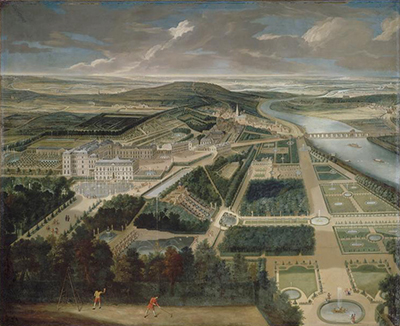 - Reconstruct Saint-Cloud! - Reconstruisons Saint-Cloud - "The château of Saint-Cloud was built during the second half of the 17th century, a few years before Versailles, by King Louis XIV’s only brother, the Duke Philippe of Orléans. It was a part of the royal Orléans family property for more than a century. During the Franco-Prussian War of 1870, the French army shot its cannons towards the Prussian-occupied grounds of Saint-Cloud to make the German soldiers retreat. During the assault, an explosive shell fell on the château and set it on fire, burning it to the ground. The remaining ruins were demolished in 1891 when the decision was made not to reconstruct the building."
- Rouen Cathedral fire: ANOTHER French landmark ablaze - "Terrifying footage shows the gothic building on fire as thick plumes of black smoke fly into the sky."
- 'Short circuit' most likely cause of Notre-Dame fire - police - "Investigators think an electrical short-circuit was the most likely cause of the Notre-Dame cathedral fire, a police official has said."
- Stunning footage shows restoration work on Notre Dame - "Two years after a fire devastated the iconic Notre Dame Cathedral in Paris, CNN's Melissa Bell goes inside the cathedral to uncover the hard restoration work going on behind the scenes?"
- The hidden history of Versailles - "Louis XIV's iconic "bachelor pad" is one of the most-visited palaces in the world. But to understand his vision for the place, leave the crowds, head outside and hop on a bike."
- The treasures of Notre-Dame - "Notre-Dame fire: Treasures that make it so special."
- ‘They said it was impossible’: how medieval carpenters are rebuilding Notre Dame - "Project leaders at Guédelon Castle tell how their woodwork savoir faire is proving a godsend for mission to restore Paris cathedral roof."
- Villa Windsor: Inside the opulent home of abdicated British King & his wife - "French home of Edward VIII and Wallis Simpson to become a museum. The run-down Villa Windsor in the Boulogne woods of western Paris will open as a museum next year to coincide with the Paris Olympics, following a multi-million euro renovation."
- Why the church known as 'God's Lantern' still shiness - "Metz Cathedral at 800: The extraordinary art and architecture of 'God's Lantern'."
- ALBERT KAHN MUSEUM & GARDENS - Boulogne-Billancourt. Historic photographs & film.
 - AMIENS CATHEDRAL - medieval cathedral builders were trying to maximize the internal dimensions in order to reach for the heavens and bring in more light. In that regard, the Amiens cathedral is the tallest complete cathedral in France, its stone-vaulted nave reaching an internal height of 42.30 metres (138.8 ft) (surpassed only by the incomplete Beauvais Cathedral). It also has the greatest interior volume of any French cathedral, estimated at 200,000 cubic metres (260,000 cu yd). The cathedral was built between 1220 and c.1270 and has been listed as a UNESCO World Heritage Site since 1981.
- ARC DE TRIOMPHE - "Come and visit the Arc de Triomphe at Place de l'Étoile at the top of the Champs-Élysées, a national symbol." Wanted by Napoleon in 1806, the Arc de Triomphe was inaugurated in 1836 by French king, Louis-Philippe, who dedicated it to the armies of the Revolution and the Empire. The Unknown Soldier was buried at the base of the arch in 1921. The flame of remembrance is rekindled every day at 18:30.
- ArÈnes de LutÈce - are among the most important remains from the Gallo-Roman era in Paris (known in antiquity as Lutetia, or Lutèce in French). Lying in what is now the Quartier Latin, this amphitheater could once seat 15,000 people, and was used to present gladiatorial combats.
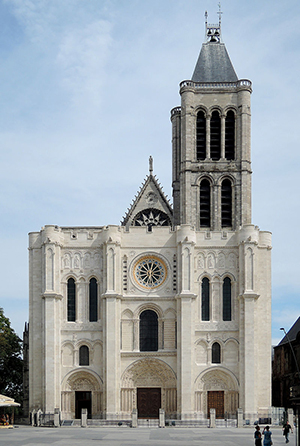 - Basilica of St Denis - large medieval abbey church in the city of Saint-Denis, now a northern suburb of Paris. The building is of unique importance historically and architecturally, as its choir completed in 1144 is considered to be the first Gothic church ever built. The burial place of the French kings, with nearly every king from the 10th to the 18th centuries being buried there, as well as many from previous centuries.
- BAYEUX TAPESTRY MUSEUM - an embroidered cloth nearly 70 metres (230 ft) long and 50 centimetres (20 in) tall, which depicts the events leading up to the Norman conquest of England concerning William, Duke of Normandy, and Harold, Earl of Wessex, later King of England, and culminating in the Battle of Hastings. It is thought to date to the 11th century, within a few years after the battle. It tells the story from the point of view of the conquering Normans, but is now agreed to have been made in England.
- Canal du Midi - since 1681. 241 km (150 mi) long canal in Southern France. It was considered at the time to be one of the greatest construction works of the 17th century.
- Carcassonne - fortified French town in the Aude department. The city is famous for the CitÉ de Carcassonne, a medieval fortress restored by the theorist and architect Eugène Viollet-le-Duc in 1853 and added to the UNESCO list of World Heritage Sites in 1997.
- Carnavalet Museum - dedicated to the history of the city. 23, rue de Sévigné, 75003 Paris. The Carnavalet houses the following: about 2,600 paintings, 20,000 drawings, 300,000 engravings and 150,000 photographs, 2,000 modern sculptures and 800 pieces of furniture, thousands of ceramics, many decorations, models and reliefs, signs, thousands of coins, countless items, many of them souvenirs of famous characters, and thousands of archeological fragments.
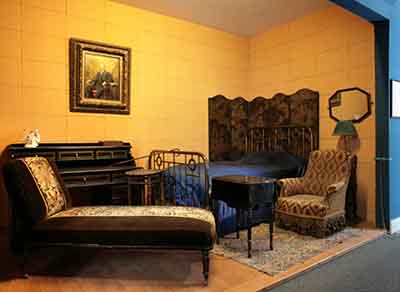 - Chambre de Marcel Proust - his bedchamber has been fully reconstructed at the Musée Carnavalet - Histoire de Paris, 23 Rue de Sévigné, 75003 Paris.
- Chambre de Marcel Proust - 102 Boulevard Haussmann, 75008 Paris.
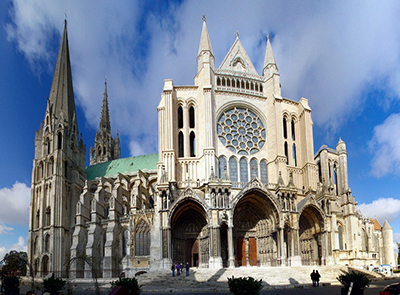 - CHARTRES CATHEDRAL - about 80 kilometres (50 mi) southwest of Paris. It is considered one of the finest examples of French Gothic architecture and is a UNESCO World Heritage Site. The current cathedral, mostly constructed between 1194 and 1250, is the last of at least five which have occupied the site since the town became a bishopric in the 4th century.
 - CHÂTEAU DE BLOIS - the Royal Château de Blois is located in the Loir-et-Cher département in the Loire Valley in the center of the city of Blois. The residence of several French kings. It has 564 rooms and 75 staircases although only 23 were used frequently. There is a fireplace in each room. There are 100 bedrooms.
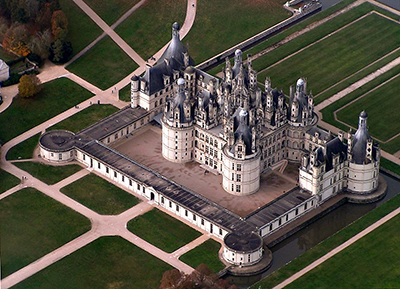 - CHÂTEAU DE Chambord - at Chambord, Loir-et-Cher, France, is one of the most recognisable châteaux in the world because of its very distinctive French Renaissance architecture which blends traditional French medieval forms with classical Renaissance structures. The building, which was never completed, was constructed by King Francis I of France.
- CHÂTEAU DE CHANTILLY - "The unspoilt treasures of a 19th century prince." The château houses the Musée Condé It is one of the finest art galleries in France and is open to the public.
- CHÂTEAU de Ferney-Voltaire - Allée du Château, 01210 Ferney-Voltaire. Voltaire rebuilt the castle entirely from 1758. He landscaped the grounds and didn't shrink from getting his hands dirty himself. Alternately town planner, entrepreneur, and patron of the arts, Voltaire transformed the town of Ferney along the lines laid out in Candide (1759) and summed up in his famous maxim: "il faut cultiver notre jardin" (we must tend to our garden).
 - CHÂTEAU de Fontainebleau - located 55 kilometres (34 miles) southeast of the centre of Paris, and is one of the largest French royal châteaux. The medieval castle and later château was the residence of French monarchs from Louis VII through Napoleon III. Napoleon I abdicated his throne there before being exiled to Elba. "The true residence of Kings." - Napoleon I.
- CHÂTEAU DE Rambouillet - château in the town of Rambouillet, Yvelines department, in the Île-de-France region in northern France, 50 km (31 mi) southwest of Paris. It was the summer residence of the Presidents of the French Republic from 1896 until 2009.
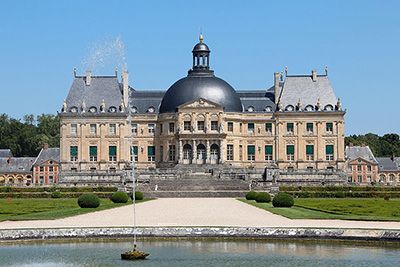 - ChÂteau de Vaux-le-Vicomte - baroque French château located in Maincy, near Melun, 55 kilometres (34 mi) southeast of Paris in the Seine-et-Marne département. Constructed from 1658 to 1661 for Nicolas Fouquet.
- ChÂteau de Voltaire at Ferney - "Welcome to castle of Voltaire in Ferney." Discover the castle where Voltaire spent the last twenty years of his life. 1, allée du Château, 01210 Ferney-Voltaire.
- 10 good reasons to visit ChÂteau de Vaux-le-Vicomte - "The Château de Vaux-le-Vicomte will astonish you! Find out why."
- Chauvet Cave - contains the earliest known and best preserved figurative cave paintings in the world. Chauvet-Pont-d'Arc Cave in the Ardèche department of southern France.
- Chemin de fer de Petite Ceinture - Parisian railway that, from 1852, was a circular connection between Paris's main railway stations within the fortified walls of the city. In a partial state of abandonment since 1934, the future of its yet-undeveloped property is the subject of much debate as of 2013.
- City walls of Paris - several successive city walls surrounded Paris from ancient times through until the twentieth century, except for between 1670 (when Louis XIV ordered the demolition of the Louis XIII Wall) and 1785 (when construction began on the Wall of the Farmers-General). The walls served to defend the town, protect inhabitants, and assess goods sold in Paris.
- Conques - in the department of Aveyron. It is built on a hillside and has classic narrow Medieval streets. The historic core of the town has very little construction dating from between 1800 and 1950, leaving the medieval structures remarkably intact.
- EIFFEL TOWER - Paris.
- FONDATION PIERRE BERGÉ - YVES SAINT LAURENT - 5, avenue Marceau, Paris 16, France.
- GALERIES NATIONALES DU GRAND PALAIS - Paris.
- Gobelins Manufactory - tapestry factory located in Paris at 42 Avenue des Gobelins. It is best known as a royal factory supplying the court of the French monarchs since Louis XIV and is now run by the Administration générale du Mobilier national et des Manufactures nationales de tapis et tapisseries of the French Ministry of Culture. The factory is open for guided tours several afternoons per week by appointment as well as for casual visits every day except Mondays and some specific holidays.
- GRAND PALAIS - is a large historic site, exhibition hall and museum complex located at the Champs-Élysées in the 8th arrondissement of Paris.
- Grande Galerie de l'Évolution - Paris. Natural history museum.
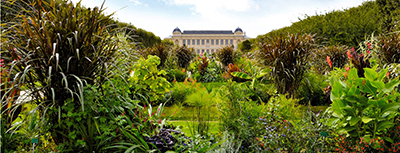 - Jardin des Plantes - 57 Rue Cuvier, 75005 Paris, France. Since 1635. The main botanical garden in France. About 4500 plants are arranged by family on a one hectare (10,000 sq. m.) plot. Three hectares are devoted to horticultural displays of decorative plants. An Alpine garden has 3000 species with world-wide representation. Specialized buildings, such as a large Art Deco winter garden, and Mexican and Australian hothouses display regional plants, not native to France. The Rose Garden, created in 1990, has hundreds of species of roses and rose trees.
- JEU DE PAUME - museum of contemporary art.
- La Conciergerie - 2 Boulevard du Palais, 75001 Paris. Former prison in Paris. Hundreds of prisoners during the French Revolution were taken from the Conciergerie to be executed on the guillotine at a number of locations around Paris.
- LA MAISON DES CANUTS - a living museum that reveals the richness and quality of the silk industry in Lyon.
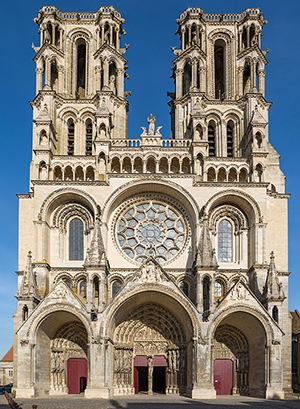 - Laon Cathedral - one of the most important examples of the Gothic architecture of the 12th and 13th centuries, earlier than the cathedrals of Sens and Notre Dame of Paris and ranking with them in importance. It is located in Laon, Picardy.
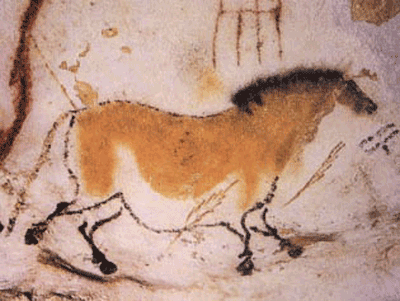 - Lascaux Caves - a complex of caves in southwestern France famous for its Paleolithic cave paintings. These paintings are estimated to be 17,300 years old. They primarily consist of images of large animals, most of which are known from fossil evidence to have lived in the area at the time.
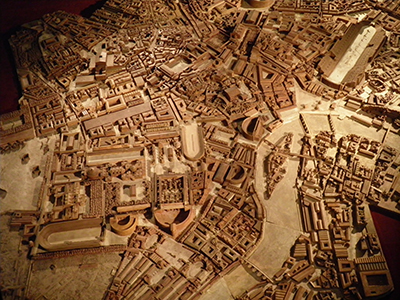 - Le Plan de Rome - University of Caen. Large architectural model of Ancient Rome. It is a plaster model of about 70 square metres at a scale of 1:400, showing Rome as it would have been in the time of the emperor Constantine I (4th century AD).
- Les Invalides - Paris. Commonly known as Hôtel national des Invalides (The National Residence of the Invalids), or also as Hôtel des Invalides, is a complex of buildings in the 7th arrondissement of Paris, containing museums and monuments, all relating to the military history of France, as well as a hospital and a retirement home for war veterans, the building's original purpose.
- Lourdes - yearly from March to October the Sanctuary of Our Lady of Lourdes is a place of mass pilgrimage from Europe and other parts of the world. The spring water from the grotto is believed by some to possess healing properties. In 1858 Lourdes rose to prominence in France and abroad due to the Marian apparitions seen by the peasant girl Bernadette Soubirous, who was later canonized. Shortly thereafter the city became one of the world's most important sites of pilgrimage and religious tourism. It is the second most important center of tourism in France, second only to Paris, and the third most important site of international Catholic pilgrimage after Rome and the Holy Land.
- LOUVRE - since 1792. One of the world's largest museums and a historic monument in Paris, France. A central landmark of the city, it is located on the Right Bank of the Seine. Nearly 35,000 objects from prehistory to the 21st century are exhibited over an area of 60,600 square metres (652,300 square feet). The Louvre is the world's most visited museum, receiving more than 9.7 million visitors in 2012.
- Maison de Victor Hugo - 6 Place des Vosges, 75004 Paris.
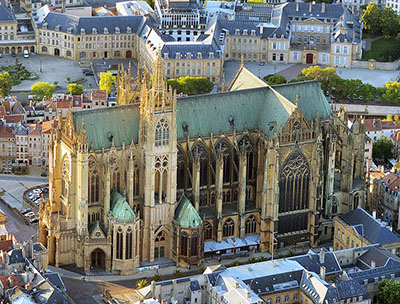 - Metz Cathedral - otherwise the Cathedral of Saint Stephen, Metz (French: Cathédrale Saint Étienne de Metz), is a Roman Catholic cathedral in Metz, capital of Lorraine. Finished between 1486 and 1520. Metz Cathedral has the third-highest nave of cathedrals in France (41.41 meters (135.9 ft)), behind Amiens Cathedral and Beauvais Cathedral. It is nicknamed la Lanterne du Bon Dieu ("the Good Lord's lantern"), displaying the largest expanse of stained glass in the world with 6,496 m2 (69,920 sq ft). The stained glass windows include works by Gothic and Renaissance master glass makers Hermann von Münster, Theobald of Lixheim, and Valentin Bousch.
- Mont Saint-Michel - Normandy, 50170 Le Mont-Saint-Michel.
- MUSÉE AIR + ESPACE - Aéroport de Paris-Le Bourget, 93350 Le Bourget, France. French aerospace museum. Occupying over 150,000 square metres (1,600,000 sq ft) of land and hangars, it is one of the oldest aviation museums in the world. The museum's collection contains more than 19,595 items, including 150 aircraft, and material from as far back as the 16th Century. Also displayed are more modern air and spacecraft, including the prototype for Concorde, and Swiss and Soviet rockets.
- MUSÉE Carnavalet - since 1880. In Paris is dedicated to the history of the city.
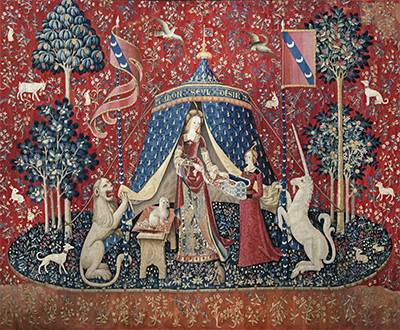 - MUSÉE de Cluny - since 1863. Is a museum of medieval art in Paris. The museum is 11,500 square feet, 6,500 of which are designed for expositions. It contains around 23,000 artifacts dating from the Gallo-Roman period up until the 16th century. There are currently 2,300 artifacts on display. The collections contain pieces from Europe, the Byzantine Empire, and the Islamic world of the Middle Ages. 28 rue Du Sommerard, 75005 Paris.
- MUSÉE DE L'ANNONCIADE DE SAINT-TROPEZ - Created in 1922, reminds us that the town of Saint-Tropez was one of the most active centres of the pictorial avant-garde at the .. 2 Place Georges Grammont, 83990 Saint-Tropez.
- MUSÉE DE L'ARMÉE - Hôtel national des Invalides, 129 rue de Grenelle, 75007 Paris. National military museum of France. The museum's seven main spaces and departments contain collections that span the period from antiquity through the 20th century. It holds 500,000 artifacts, including weapons, armor, artillery, uniforms, emblems and paintings.
- MUSÉE de la Chasse et de la Nature - 62, rue des Archives, 75003 Paris. Private museum of hunting and nature.
- MusÉe de l'École de Nancy - since 1964. Museum devoted to the École de Nancy, an Art Nouveau movement founded in 1901 by Émile Gallé, Victor Prouvé, Louis Majorelle, Antonin Daum and Eugène Vallin in the city of Nancy in Lorraine.
- MusÉe de l'Homme - (Museum of Man). Anthropology museum in Paris.
- MusÉe des arts dÉcoratifs de Paris - since 1905. 107, rue de Rivoli, 75001 Paris, France.
- MusÉe des BlindÉs - since 1977. ("Museum of Armoured Vehicles"). Tank museum located in the Loire Valley of France, in the town of Saumur. It is now one of the world's largest tank museums.
- MusÉe des Maisons Comtoises - open-air museum extends over a 15-hectare site at Nancray.
- MUSÉE Édith Piaf - 5, rue Crespin du Gast, 75011 Paris. Private museum dedicated to singer Édith Piaf (1915-1963). It contains memorabilia including her china collection, gold and platinum records, dress and shoes, photographs, fan letters, sheet music, posters, and recordings.
- MUSÉE GADAGNE - Lyon. Composed of the Musée d'histoire de Lyon (Museum of Lyon History) and the Musée des marionnettes du monde (Museum of world puppets).
- MUSÉE MATISSE DE NICE - 164, avenue des Arènes de Cimiez, 06000 Nice.
- MUSÉE NATIONAL DES ARTS ET MÉTIERS
- MUSÉE NATIONAL du Moyen Âge - Paris. Houses a variety of important medieval artifacts, in particular its tapestry collection, which includes the fifteenth century tapestry cycle La Dame à la Licorne (The Lady and the Unicorn). Other notable works stored there include early Medieval sculptures from the seventh and eighth centuries. There are also works of gold, ivory, antique furnishings, stained glass, and illuminated manuscripts.
- MUSÉE Nissim de Camondo - elegant house museum of French decorative arts located in the Hôtel Camondo, 63, rue de Monceau, at the edge of the Parc Monceau, in the 8th arrondissement of Paris.
- MUSÉE PICASSO PARIS - Hôtel Salé, 5 rue de Thorigny, 75003 Paris.
- MUSÉUM NATIONAL D'HISTOIRE NATURELLE - National Museum of Natural History.
- Museum of European and Mediterranean Civilisations | MuCEM - since 2013. Located in Marseille. The museum is devoted to European and Mediterranean civilisations. With a permanent collection charting historical and cultural cross-fertilisation in the Mediterranean basin, it takes an interdisciplinary approach to society through the ages up to modern times.
- Napoleon III Apartments: Small & Large Dining Rooms - at the Louvre: Richelieu wing - 1st floor - Room 547 - Napoleon III Apartments. Small dining room.
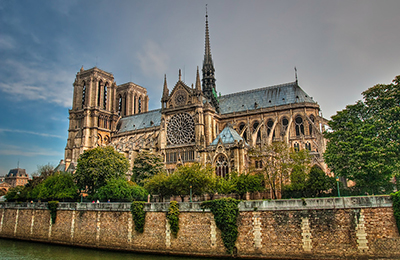 - NOTRE-DAME of PARIS - "A place of faith and welcome for over 860 years." Medieval Catholic cathedral on the Île de la Cité in the fourth arrondissement of Paris, France. The cathedral is widely considered to be one of the finest examples of French Gothic architecture, and is among the largest and most well-known church buildings in the world. The naturalism of its sculptures and stained glass are in contrast with earlier Romanesque architecture. The cathedral's teams are mobilized to make the ceremonies for the reopening of Notre-Dame on December 7 and 8, 2024, moments of joy, peace and fraternity in which as many people as possible can take part. After years of restoration, Notre-Dame de Paris is joyfully preparing to reclaim its primary mission: celebrating worship and welcoming both faithful and visitors from around the world.
- PALACE OF VERSAILLES - royal château in Versailles in the Île-de-France region of France. The court of Versailles was the centre of political power in France from 1682, when Louis XIV moved from Paris, until the royal family was forced to return to the capital in October 1789 after the beginning of the French Revolution. Versailles is therefore famous not only as a building, but as a symbol of the system of absolute monarchy of the Ancien Régime.
- Palais Galliera - since 1895. museum of fashion and fashion history located at 10, avenue Pierre 1er de Serbie, in the 16th arrondissement of Paris.
- Place des Vosges - the oldest planned square in Paris and one of the finest in the city. It is located in the Marais district, and it straddles the dividing-line between the 3rd and 4th arrondissements of Paris. Originally known as the Place Royale, the Place des Vosges was built by Henri IV from 1605 to 1612. A true square (140 m × 140 m), it embodied the first European program of royal city planning.
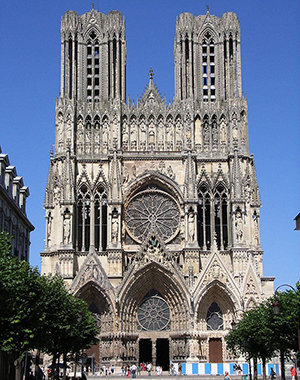 - REIMS CATHEDRAL - the seat of the Archdiocese of Reims, where the kings of France were crowned. The cathedral replaced an older church, destroyed by fire in 1211, that was built on the site of the basilica where Clovis was baptized by Saint Remi, bishop of Reims, in AD 496. That original structure had itself been erected on the site of some Roman baths.
 - Rouen Cathedral - consecrated October 1, 1063 in the presence of William the Conqueror. The cathedral is in the Gothic architectural tradition. The church was the tallest building in the world from 1876-1880 with a height of 151m.
- Rouen Cathedral fire: ANOTHER French landmark ablaze - "Terrifying footage shows the gothic building on fire as thick plumes of black smoke fly into the sky."
- Saint-Malo - historic walled port city and commune (with the commune expanded beyond the walls in 1968), in Brittany on the English Channel coastline of northwestern France. The city is a major tourist destination, with many ancient structures.
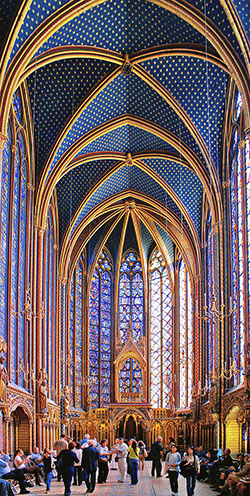 - Sainte-Chapelle - royal medieval Gothic chapel, located near the Palais de la Cité, on the Île de la Cité in the heart of Paris.
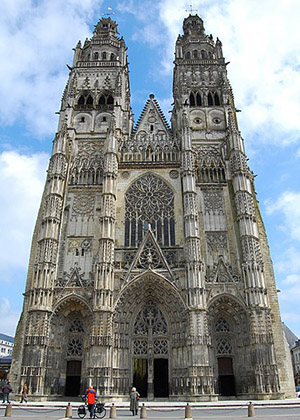 - Tours Cathedral - built between 1170 and 1547. Dedicated to Saint Gatianus. It is the seat of the Archbishops of Tours, the metropolitan cathedral of the Tours ecclesiastical province.
 - VÉzelay Abbey - in Vézelay in the Yonne department in northern Burgundy. The Benedictine abbey church, now the Basilica of Sainte-Marie-Madeleine (Saint Mary Magdalene), with its complicated program of imagery in sculpted capitals and portals, is one of the outstanding masterpieces of Burgundian Romanesque art and architecture. Relics of Mary Magdalene can be seen inside the Basilica.
Germany
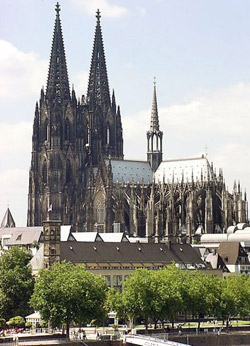 - 5 years after a $124-million museum heist shocked the world, recovered jewels returned home - "In November 2019, thieves stole pieces that contained more than 4,300 diamonds with an estimated value of over 113 million euros ($124 million), from the Gruenes Gewoelbe (Green Vault) museum in Dresden, in the eastern German state of Saxony."
- Inside the $128 million heist that shocked the world & the police chase that followed - "It took at least nine hard blows from an ax to smash the glass case in Dresden's historic Green Vault. Once the glass shattered, the two masked thieves grabbed 21 priceless diamond-studded artifacts and disappeared."
- LIST OF MUSEUMS IN GERMANY - Wikipedia.
- Museum Island - the name of the northern half of an island in the Spree river in the central Mitte district of Berlin. It is so called for the complex of five internationally significant museums, all part of the Berlin State Museums.
- Why Nefertiti still inspires, 3,300 years after she reigned - "One hundred years ago, in a courtyard at the Neues Museum in Berlin, the world came face to face for the first time with one of its most enduring beauty icons: Queen Nefertiti. Discovered in Egypt in 1912 by German archaeologists, her 3,300-year-old stucco-coated limestone bust went on display in 1924. Its unveiling stunned audiences from Cairo to London and sparked a century-long fascination with her aesthetic."
- PRUSSIAN PALACES & GARDENS - Official site.
- THE MOST IMPORTANT MUSEUMS IN GERMANY
- Why Nefertiti still inspires, 3,300 years after she reigned - "The bust of Nefertiti at the Neues Museum in Berlin. The figure of the ancient Egyptian queen was presented to the public for the first time in Berlin in 1924, having been discovered 12 years earlier during excavations in Egypt."
- Aachen - traditionally known in English and French as Aix-la-Chapelle, is a spa and border city in North Rhine-Westphalia. Aachen was the preferred residence of Charlemagne, and, from 936 to 1531, the place where 31 Holy Roman Emperors were crowned Kings of the Germans.
- Albrecht DÜrer's House - Nuremberg.
- ALTES (OLD) MUSEUM
- AUTO & TECHNIK MUSEUM SINSHEIM - Sinsheim. The largest permanent Formula One collection in Europe along with Ferrari’s motorcycles, land speed record holders and classic cars. The largest privately-owned museum in Europe.
- Basilica of the Fourteen Holy Helpers - church located near the town of Bad Staffelstein near Bamberg, in Bavaria, southern Germany. The late Baroque-Rococo basilica, designed by Balthasar Neumann, was constructed between 1743 and 1772. It is dedicated to the Fourteen Holy Helpers, a group of saints venerated together in the Catholic Church, especially in Germany at the time of the Black Death.
- Berlin Wall Memorial - central memorial site of German division, located in the middle of the capital.
- BERLINER UNTERWELTEN - guided tours. Society for exploration and documentation of subterranean architecture in Berlin.
- Bismarck-Museum Friedrichsruh - Aumühle, Schleswig-Holstein.
- Bode Museum - one of the group of museums on the Museum Island in Berlin. It is the home for a collection of sculptures, Byzantine art, and coins and medals.
- Beethoven House - Bonngasse 20, Bonn is a memorial site, museum and cultural institution serving various purposes. Founded in 1889 by the Beethoven-Haus association, it studies the life and work of composer Ludwig van Beethoven.
- BrÜhl's Terrace - historic architectural ensemble in Dresden. Nicknamed "The Balcony of Europe", the terrace stretches high above the shore of the river Elbe. Located north of the recently rebuilt Neumarkt Square and the Frauenkirche, is one of the favourite inner-city places of both locals and tourists for walking, people watching, and having a coffee.
- Buddenbrookhaus - Lübeck.
- Bundeswehr Military History Museum - Dresden.
- CHARLOTTENBURG PALACE - the largest palace in Berlin, and the only surviving royal residence in the city dating back to the time of the Hohenzollern family.
- Checkpoint Charlie Museum - named after the famous crossing point on the Berlin Wall (13 August 1961 - 9 November 1989).
- COLOGNE CATHEDRAL
- DEUTSCHE GUGGENHEIM - Berlin.
- DEUTSCHES HISTORISCHES MUSEUM | GERMAN HISTORICAL MUSEUM
- DEUTSCHES HISTORISCHES MUSEUM: LINZER SAMMLUNG
- DEUTSCHES MEERESMUSEUM | OZEANEUM - Stralsund.
- DEUTSCHES MUSEUM IN MUNICH
- Die Neue Sammlung - Munich. One of the leading design museums in the world, with the largest collection of industrial and product design.
- Documentation Centre Nazi Party Rally Grounds - Nuremberg.
- Dokumentation Obersalzberg - 83471 Berchtesgaden, Bavaria. Offers the visitor to this historic site the opportunity to study and reflect on the history of Obersalzberg and the history of National Socialism.
- Ducal Vault - Weimar’s Ducal Vault is not a typical burial place for a royal family. Since 1832, the members of the House of Saxe-Weimar-Eisenach have shared their tomb with the two most famous poets of Weimar classicism, Johann Wolfgang von Goethe and Friedrich Schiller. Historischer Friedhof, Am Poseckschen Garten, 99423 Weimar.
- Eltz Castle - medieval castle nestled in the hills above the Moselle River between Koblenz and Trier. It is still owned by a branch of the same family (the Eltz family) that lived there in the 12th century, 33 generations ago.
- Fuggerei - world's oldest social housing complex still in use. It is a walled enclave within the city of Augsburg, Bavaria. It takes it name from the Fugger family and was founded in 1516 by Jakob Fugger the Younger (known as "Jakob Fugger the Rich") as a place where the needy citizens of Augsburg could be housed. It is still inhabited today, affording it the status of being the oldest social housing project in the world.
- German Wallpaper Museum - founded in 1923. Hessian State Museum, Brüder-Grimm-Platz 5, 34117 Kassel.
- GERMANISCHES NATIONALMUSEUM - Nuremberg. The largest museum of cultural history in the German-speaking region.
- Goethe Gartenhaus - the former vineyard cottage in the Park on the Ilm, probably built around the end of the 16th century, was the first home acquired by Johann Wolfgang Goethe in Weimar in 1776, a few months after his arrival in Weimar, together with the surrounding garden. Park an der Ilm, 99423 Weimar.
- Goethe National Museum - world-renowned for its presentation and study of Goethe’s life and legacy. It is comprised of Goethe’s historic residence and garden on Frauenplan and includes a portion of Goethe’s private art and natural scientific collections and personal library. Frauenplan 1, 99423 Weimar.
- GrÜnes GewÖlbe | GREEN VAULT - Dresden. "The Baroque Treasury." Enjoys world renown as one of the richest treasure chambers in Europe. Founded in 1723 by Augustus the Strong of Poland and Saxony, and it features a variety of exhibits in styles from Baroque to Classicism. It has some claim to be the oldest museum in the world; it is older than the British Museum, opened in 1759, but the Vatican Museums date their foundation to the public display of the newly excavated Laocoön group in 1506.
- Gutenberg Museum Mainz - since 1900. "Experience the history of printing, writing, and books in the Gutenberg-Museum. The Gutenberg-Museum, which lies opposite the cathedral in the heart of the old part of Mainz, is one of the oldest museums of the book and printing in the world."
- Heinz Nixdorf MuseumsForum - Fürstenallee 7, Paderborn. "More than just the world´s biggest computer museum."
- HELMUT NEWTON FOUNDATION - Berlin.
- Hermannsdenkmal | Hermann monument - monument located in Ostwestfalen-Lippe in Germany. It stands on the densely forested and 386 m tall. The monument commemorates the Cherusci war chief Hermann or Armin (Latin: Arminius) and the Battle of the Teutoburg Forest in which the Germanic tribes under Arminius recorded a decisive victory in 9 AD over three Roman legions under Varus.
- House of the Wannsee Conference - Am Großen Wannsee 56-58, 14109 Berlin. The Wannsee Conference was a meeting of senior officials of the Nazi German regime, held in the Berlin suburb of Wannsee on 20 January 1942. The purpose of the conference was to inform administrative leaders of Departments responsible for various policies relating to Jews that Reinhard Heydrich had been appointed as the chief executor of the "Final solution to the Jewish question".
- Internationales Maritimes Museum Hamburg - (International Maritime Museum) is a private museum in the HafenCity quarter of Hamburg. The museum houses Peter Tamm's collection of model ships, construction plans, uniforms, and maritime art, amounting to over 40,000 items and more than one million photographs.
- Iron Gates - a gorge on the river Danube. Archaeologists have named the Iron Gates mesolithic culture, of the central Danube region circa 13,000 to 5,000 years ago, after the gorge.
- Jewish Museum - Berlin. One of the largest Jewish Museums in Europe.
- MARGARETE STEIFF MUSEUM - Giengen an der Brenz. Home of the famous Teddy bear.
- Marstallmuseum - at Nymphenburg Palace, Munich. Museum of carriages and sleighs in the former royal stables.
- Memorium Nuremberg Trials - Nuremberg.
- MERCEDES-BENZ MUSEUM - Mercedesstrasse 100, Stuttgart.
- Memorial St. Nikolai - Hamburg. Permanent exhibition: "Gomorrah 1943 – Hamburg’s destruction through aerial warfare."
- Museum for Art and Industry - Hamburg.
- MUSEUMS OF COLOGNE
- Neanderthal Museum - Mettmann. Located at the site of the first Neanderthal man discovery in the Neandertal, it features an exhibit centered on human evolution.
- Neuengamme Concentration Camp Memorial - Jean-Dolidier-Weg 75, Hamburg.
- NEUES (NEW) MUSEUM - Berlin. Exhibits include the Egyptian and Prehistory and Early History collections, as it did before the war. The artifacts it houses include the iconic bust of the Egyptian queen Nefertiti, the Green Head, the Golden Hat and many other famous objects.
- NEUSCHWANSTEIN CASTLE - Hohenschwangau (Bavaria).
- Nymphenburg Palace - baroque palace in Munich, Bavaria, southern Germany. The palace is the main summer residence of the former rulers of Bavaria of the House of Wittelsbach.
- PERGAMON MUSEUM - accommodates three separate museums: the Antikensammlung (Collection of Classical Antiquities), occupying the architectural halls and the sculpture wing, the Vorderasiatisches Museum (Museum of the Ancient Near East) and the Museum für Islamische Kunst (Museum of Islamic Art).
- Pilgrimage Church of Wies - (German: Wieskirche) is an oval rococo church, designed in the late 1740s by Dominikus Zimmermann, who lived nearby for the last eleven years of his life. It is located in the foothills of the Alps, in the municipality of Steingaden in the Weilheim-Schongau district, Bavaria.
- Richard Wagner Museum - Bayreuth. Since 1976, Richard Wagner’s home, Wahnfried House, has been home to the Richard Wagner Museum. Built between 1872 and 1874 in the palace grounds in Bayreuth, Wahnfried House is also the last resting place of Richard Wagner, who was buried in the gardens after his death in 1883.
- Royal Palace Dresden - Hall of the Giants. Contains one of the most important collections of ceremonial weapons, armour and costume in the world. More than 350 objects are displayed, including tournament and ceremonial weaponry and accoutrements.
- SANSSOUCI - the former summer palace of Frederick the Great, King of Prussia, in Potsdam, near Berlin. It is often counted among the German rivals of Versailles.
- SchwerbelastungskÖrper - (German: "heavy load-bearing body") (a.k.a. Großbelastungskörper - GBK) is a hefty concrete cylinder in Berlin, Germany located at the intersection of Dudenstraße, General-Pape-Straße, and Loewenhardtdamm in the northwestern part of the borough of Tempelhof. It was erected in 1941-1942 by Hitler’s chief architect Albert Speer to determine the feasibility of constructing large buildings on the area's marshy, sandy ground, specifically a massive triumphal arch on a nearby plot.
- Speicherstadt - literally: 'City of Warehouses', meaning warehouse district) in Hamburg, is the largest warehouse district in the world where the buildings stand on timber-pile foundations, oak logs, in this particular case. It is located in the port of Hamburg—within the HafenCity quarter—and was built from 1883 to 1927. As the first site in Hamburg, it has been awarded the status of UNESCO World Heritage Site on 5 July 2015.
- Stasi-Museum Berlin - Ruschestraße 103, Haus 1, Berlin. The headquarter of the State Security. Considering itself the "shield and sword of the party". The centrepiece of the highly secured compound was "house 1", constructed in 1960. It was built as the seat of the offices of the Minister of State Security. The minister's offices ("the Mielke suite"), the offices of those of his inner circle as well as the conference room and lounge have been almost completely preserved in their original condition.
- Teufelsberg - Berlin. "The Teufelsberg is a monument of history. It emerged from the fractures and dislocations of the history of Berlin, Germany, and therefore the world.
The Empire, National Socialism and the Cold War have left their mark at this remote location – layer by layer."
- The Eagle's Nest | Kehlsteinhaus - at Obersalzberg in Berchtesgaden, Bavaria. 50th birthday present for Adolf Hitler to serve as a retreat, and a place for him to entertain visiting dignitaries.
- THE Hitler Pages - "Historical Hitler Sites."
- Top Secret Museum - Oberhausen. "The World's Most Comprehensive Exhibit On Espionage."
- Walhalla memorial - hall of fame that honors laudable and distinguished people, famous personalities in German history – politicians, sovereigns, scientists and artists of the German tongue". The hall is housed in a neo-classical building above the Danube River, east of Regensburg, in Bavaria.
- WEWELSBURG MUSEUM - Renaissance castle located in the northeast of North Rhine-Westphalia. The castle has a triangular layout - three round towers connected by massive walls. After 1934, it was used by the SS under Heinrich Himmler and was to be expanded to the central SS-cult-site. After 1941, plans were developed to enlarge it to the so-called "Center of the World". In 1950 the castle was reopened as a museum and youth hostel.
- WÜrzburg Residenz - former residence of the Würzburg prince-bishops is one of the most important baroque palaces in Europe and today it is on UNESCO's World Heritage list.
Greece
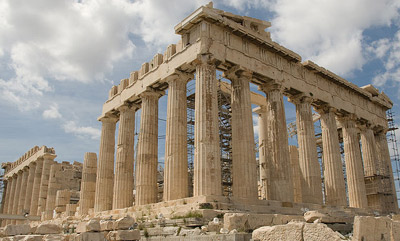 - Acropolis now: Greeks outraged at concreting of ancient site - "Installation of new pathway and lift has been criticised by archaeologists and called ‘a scandal’."
- Acropolis temporarily closed to public due to heatwave; tourist faints - "The Acropolis of Athens will be closed to public for several hours on Friday, July 14, as the heatwave that hits Greece reaches its peak with temperatures over 41 degrees Celsius also in the Greek capital."
- Acropolis: The Oldest Photograph of the Acropolis - "In the distant year of 1842, French photographer and draughtsman Joseph-Philibert Girault de Prangey took the first-ever photograph of the 'Holy Rock.' To be more precise, this photograph is a daguerreotype, and is actually one of the earliest surviving photographs of Greece."
- LIST OF MUSEUMS IN GREECE - Wikipedia.
- Oracle of Delphi, Greece - "The Oracle of Delphi, the Pythia, who was also referred to as the sibyl, was a priestess who would prophesy from the tripod in the sunken adyton of the Temple of Apollo. The god himself was believed to speak through this oracle."
- Palace of Aigai: Greece reopens huge Alexander the Great monument - "The site of one of the most important monuments in classical antiquity - the palace where Alexander the Great was crowned king - has reopened after a 16-year restoration."
- Parthenon: Colourful beauty of Parthenon marbles revealed in scientific analysis - "Innovative scanning techniques show painting of sculptures was potentially as intricate as their carving. Though the Parthenon marbles were admired for centuries for their stark white brilliance, it has long been known that the sculptures were originally brightly painted, before millennia of weathering, cannon bombardment, rough handling and overenthusiastic cleaning scoured them clean."
- Scientists Solve Mystery of High Quality Sound at Theater of Epidaurus - "The ancient mystery of the great sound quality at the ancient Greek theater of Epidaurus has finally been solved, researchers posit in a recent study."
- Why returning the Elgin Marbles to Greece would be madness - The Telegraph.
- Top Monuments to See at the Acropolis of Athens - "Thought to be inhabited as far back as 5,000 BC, the Acropolis and its monuments largely remain in suitable condition to this day. Archaeological ruins at the Acropolis include temples, statues, sanctuaries, altars, theaters, and even fountains. If you visit, it's well worth taking the time to appreciate some of the more remarkable sites."
- ACROPOLIS MUSEUM - Athens. Archaeological museum focused on the findings of the archaeological site of the Acropolis of Athens. The museum was built to house every artifact found on the rock and on its feet, from the Greek Bronze Age to Roman and Byzantine Greece.
- Ancient Theatre of Epidaurus - it is considered to be the most perfect ancient Greek theatre with regard to acoustics and aesthetics.
- Archaeological Museum of Thessaloniki - holds and interprets artifacts from the Archaic, Classical, Hellenistic and Roman periods, mostly from the city of Thessaloniki but also from the region of Macedonia in general.
- Delphi Archaeological Museum - one of the principal museums of Greece and one of the most visited. Founded in 1903, it has been re-arranged multiple times and houses the discoveries made at the panhellenic sanctuary of Delphi (commonly known as the Oracle of Delphi), which date from the prehistoric period through to late Antiquity.
Ireland
 - Ireland's priceless treasure hidden by monks - "One of the most exciting archaeological finds in the history of Irish art was unearthed on Tipperary's Derrynaflan Island by a man and his son using metal detectors."
- LIST OF MUSEUMS IN IRELAND - Wikipedia.
- National Museum of Ireland - Dublin. The national museum in Ireland. It has three branches in Dublin and one in County Mayo, with a strong emphasis on Irish art, culture and natural history.
- Russborough House - stately house situated near the Blessington Lakes in County Wicklow. Reputed to be the longest house in Ireland, with a frontage measuring 210 m/700 ft. It is an example of Palladian architecture. Amongst the paintings returned are four Claude Joseph Vernet paintings entitled 'Morning', 'Midday', 'Sunset', and 'Night' and Vermeer's Lady Writing a Letter With Her Maid and Goya's Portrait of Dona Antonia Zarate.
Italy
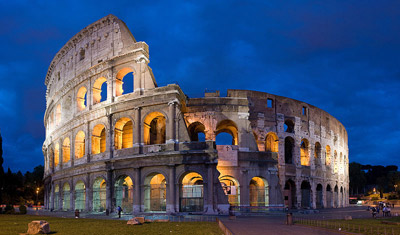 - $1m challenge: ‘If the Turin Shroud is a forgery, show how it was done’ - "Expert on revered relic calls on British Museum to back up the results of its disputed carbon dating tests."
- $42,000 way to experience Florence's Accademia art museum - CNN travel.
- A blue painted shrine is the latest discovery in Pompeii ‘treasure chest’ - "Archaeologists have unearthed an intricately decorated blue room, interpreted as an ancient Roman shrine known as a sacrarium, during recent excavations in central Pompeii in Italy."
- A hidden part of Venice opens for first time - Never-before-seen Venice landmark opens to the public. The Procuratie Vecchie in St. Mark's Square - one of the most famous buildings in one of the world's most famous city spaces - has opened to the public for the first time in history.
- A Restored Painting Recalls the Colosseum’s Christian Past - "The restoration of a wall painting depicting an idealized Jerusalem is a reminder that the Roman monument, known best for gladiatorial combat, was a sacred Christian space for centuries."
- After the deluge: A tourist visits flood-hit Venice - CNN travel.
- Ancient winery gave rich Romans a taste of winemaking - without the hard work - "Researchers speculate that an emperor and his courtiers could have visited the villa annually for the experience. A lavish 2,000-year-old winery uncovered in the ruins of a villa just outside Rome may have been used as an entertainment venue, providing a winemaking 'experience' for wealthy Romans."
- Astonishing new finds in the ancient city of Pompeii - "Kitchen shrine serpents and more fascinating new Pompeii discoveries. A kitchen shrine adorned with serpents, a bakery, human skeletons, exquisite frescos, and yes, a picture of something that looks very much like pizza. These are among the new finds being turned up at the Pompeii Archaeological Park."
- Beyond the Colosseum: Eight sites that reveal Rome's hidden history - "From the palace of Domus Aurea to the Mussolini-planned EUR quarter, few cities are better for exploring the legacy of the Roman Empire. Here are eight hidden gems to explore."
- cathedral of Monreale: 'It's pure beauty' - Italy's largest medieval mosaics restored - "On a hill overlooking the city of Palermo, in Sicily, sits a lesser-known gem of Italian art: the cathedral of Monreale. Built in the 12th century under Norman rule, it boasts Italy's largest Byzantine-style mosaics, second in the world only to those of Hagia Sophia in Istanbul."
- Colosseum reopens to tourists: 'With so few of us we can enjoy it more' - "Roman site begins admitting small groups as Italy scrambles to salvage its tourism sector."
- Eruption of Mt. Vesuvius Wasn't Pompeii's Only Killer - "While the volcano’s eruption was deadly, research shows that many people in the ancient Roman city died in building collapses from the earthquake associated with the outburst."
- Exceptionally well-preserved snack bar unearthed in Pompeii - "The frescoed thermopolium, a Roman-era fast-food stall, is the first to be fully excavated."
- Frescoes from the time of Hadrian unveiled at ancient Roman baths - "Frescoes dating back almost 2,000 years to the time of the Roman emperor Hadrian will now be on display to the public when they visit Rome's ancient Baths of Caracalla."
- How are Rome's monuments still standing? - "Nearly 2,000 years on, how are the Colosseum and the Pantheon still standing despite earthquakes, floods and military conflicts?"
- Human remains in tomb are best-preserved ever found in Pompeii - "Former slave who rose through the social ranks was interred at necropolis of Porta Sarno before AD79."
- Italy's Invisible Cities - TV series. (2017).
- Italy's new ruins: heritage sites being lost to neglect & looting - "Overgrown and weathered, many historical monuments are disappearing as public funds for culture fail to match modern Italy’s inheritance."
- Italy's plan to save Venice from sinking - "Venice is at risk of succumbing to its sinking foundations and rising sea levels. To avert disaster, the city is making changes."
- Julius Caesar: Square where Julius Caesar was killed will open to public in Rome - "Tourists in the city will be able to examine the spot where the Roman dictator was said to have been murdered."
- Leaning Tower of Pisa loses some of its tilt - "The Leaning Tower of Pisa has slowly started defying its name, losing four centimeters of its tilt over the past 17 years."
- List of ancient monuments in Rome - Wikipedia.
- LIST OF MUSEUMS IN ITALY - Wikipedia.
- Madonna's Pompeii party for 500 A-list guests sparks outrage among Italians - "They discover just how 'cheaply' she is renting historic site for. An American events company is believed to have booked the site for €30,000."
- MUSEUMS IN ITALY - booking & reservations.
- Mystery of why Roman buildings have survived so long has been unraveled, scientists say - "They found that white chunks in the concrete, referred to as lime clasts, gave the concrete the ability to heal cracks that formed over time. The white chunks previously had been overlooked as evidence of sloppy mixing or poor-quality raw material."
- Naples' new tourist site rewrites ancient history - "Opening in June, the Ipogeo dei Cristallini - Hypogeum of Cristallini Street - is part of an ancient cemetery, located just outside the walls of Neapolis, as the city was called 2,300 years ago."
- Pompeii: Archaeologists uncover tiny house in Pompeii with intact elaborate frescoes - "Archaeologists have uncovered a tiny house in Pompeii that is filled with elaborate - and sometimes erotic - frescoes, further revealing the ornate way in which Romans decorated their homes."
- Pompeii: Breathtaking new paintings found at ancient city - "Stunning artworks have been uncovered in a new excavation at Pompeii, the ancient Roman city buried in an eruption from Mount Vesuvius in AD79. Archaeologists say the frescos are among the finest to be found in the ruins of the ancient site."
- Pompeii excavation unearths private spa for wooing wealthy guests - "Thermal bath complex is latest discovery among ruins of Italian city destroyed by Vesuvius eruption in AD79."
- Pompeii is limiting its daily visitor numbers - "Authorities at Pompeii in southern Italy are introducing a daily limit of 20,000 visitors as part of efforts to protect the ancient site. The measure, which will come into force from November 15, will see the introduction of personalized tickets bearing the name of each visitor, according to a statement from the Pompeii archaeological park published Friday."
- Pompeii now faces a second extinction - The Guardian.
- Pompeii ruins show that the Romans invented recycling - "Excavations reveal that rubbish left outside the city walls wasn’t just dumped. It was being collected, sorted and resold."
- Pompeii victims aren't who we thought they were, DNA analysis reveals - "An ancient-DNA analysis of victims in Pompeii who died in Mount Vesuvius' eruption reveals some unusual relations between the people who died together."
- Pompeii's destruction date could be wrong - "Vesuvius eruption may have been later than thought."
- Pompeii’s golden age of discoveries, explored in pictures - "The unearthing of one stunning treasure after another has restored the reputation of the site and its protectors. Its director says the emotions have only just kicked in."
- Pompeii's House of Lovers reopens to public after 40 years - "Jewel of ancient Roman city was severely damaged by destructive earthquake in 1980."
- pozzolanic concrete: We Finally Know Why Ancient Roman Concrete Was So Durable - "The ancient Romans were masters of building and engineering, perhaps most famously represented by the aqueducts. And those still functional marvels rely on a unique construction material: pozzolanic concrete, a spectacularly durable concrete that gave Roman structures their incredible strength."
- Restored Pompeii house offers extraordinary glimpse into life in Italy's ancient city - "A Pompeii house most likely owned and filled with ancient art by two freed slaves is open to the public after 20 years of restoration."
- Roman creations that still amaze us today - "Rome might not have built ancient history's biggest empire - a shout out to Genghis for that one - but it was undoubtedly the most enduring and influential. That's because Roman passions for outrageous, oversized architecture went hand in hand with detailed record-keeping and relentless imperial PR. As a result not only have a huge number of landmark sites survived to this day, but we also know a lot about them."
- Roman ruins around the world: 10 spectacular sites that aren't in Italy - Traveller.
- Rome authorities tackle Colosseum rat infestation - "Tourists have posted videos on social media showing the rodents roaming close to the ancient amphitheatre."
- Rome’s Colosseum to gain hi-tech arena floor - "Retractable floor will allow visitors to see the ‘majesty of the monument’ from its centre, says culture minister."
- Rome's Future Is a Walk Through Its Past - "City officials kicked off a new project to create a monumental, pedestrian-friendly, archaeological area downtown, but some critics worry the plans puts tourists before residents. 'Italy is working to make the most of what is arguably the most important concentration of history, archaeology, art and nature in the world.'"
- Shaking Up Italy’s Most Popular Museum - The New York Times.
- Sinking city: how Venice is managing Europe's worst tourism crisis - "Venice’s booming tourism industry is threatening the city’s very survival. But grassroots initiatives are making a difference - and may even help other cities."
- Take a Virtual Tour of the World’s Largest Circular Tomb, Augustus’ Mausoleum - "The Roman landmark will reopen in 2021 after a 13-year restoration."
- The Leaning Tower of Pisa was once tilting dangerously. Today it’s a different story - "This week, as the monument celebrated its 850th birthday, the tilting monument’s future appearances in jokey tourist photos was assured for years to come as its guardians gave it a clean bill of health."
- The mystery that still surrounds the Shroud of Turin - CNN travel.
- The Pantheon: The ancient building still being used after 2,000 years - "When visitors walk into the Pantheon in Rome and encounter its colossal dome, they may experience the same theatricality as its guests nearly 2,000 years ago."
- The race against time to save Pompeii - "What visitors often don't realize is that only two thirds (44 hectares) of ancient Pompeii have been excavated. The rest - 22 hectares - are still covered in debris from the eruption almost 2,000 years ago. And while it's long been agreed in the international community that it's best to leave the rest untouched - funds are better spent on the upkeep of what has already been excavated - in 2017, archaeologists began to excavate a new section."
- Tipsy tourist fined $520 after diving into Rome’s Trevi Fountain - "He was fined 500 euros (around $524) and banned from visiting the Baroque landmark for life. About a dozen tourists are fined for dipping everything from their toes to water bottles into the fountain each year, according to Roman police. A greater number of would-be thieves are stopped for trying to steal some of the 1.5 million euros worth of coins that are thrown into the water each year. The money, which goes to charity, is collected daily."
- Tourists face €250 fines for sitting on Spanish Steps in Rome - "Police patrol 18th-century marble steps, blowing whistles at visitors sitting down."
- Trevi Fountain: Tourists get a bird’s eye view of Trevi Fountain during restoration works - "Rome’s baroque Trevi Fountain opened Saturday morning with selfie-takers lining a newly installed metal walkway, as workers start the painstaking process of carefully cleaning the 18th-century masterpiece."
- UNESCO recommends putting Venice on its heritage danger list - Venice is one of 1,157 places currently designated a World Heritage Site, which have 'outstanding universal value' because of their cultural or natural offerings.
- Video shows tourist climbing into Rome’s Trevi Fountain to fill up water bottle - "The footage, filmed last month, shows the woman walking over a row of rocks to reach the center of the 18th-century landmark as onlookers watch in horror. Tourists can be fined up to 500 euros for entering the fountain, which is widely considered one of the city’s best known landmarks. Legend states that anyone who throws a coin into its waters will ensure their return to Rome."
- Why are men obsessed with the Roman Empire? - "History expert says it’s a ‘very American thing’. NatGeo's Amy Briggs says men are compelled by the era due to interest in engineering and military: 'Full of good stories'."
- Assisi - town and comune of Italy in the Province of Perugia in the Umbria region. It was the birthplace of St. Francis, who founded the Franciscan religious order in the town in 1208.
- Baiae - was an ancient Roman town situated on the northwest shore of the Gulf of Naples. It was a fashionable resort for centuries in antiquity, particularly towards the end of the Roman Republic, when it was reckoned as superior to Capri, Pompeii, and Herculaneum by wealthy Romans, who built villas here from 100 BC to AD 500. It was notorious for its hedonistic offerings and the attendant rumours of corruption and scandal.
- Basilica di Santa Maria Maggiore - Papal major basilica and the largest Catholic Marian church in Rome.
- Basilica of San Vitale - church in Ravenna, and one of the most important examples of early Christian Byzantine art and architecture in Europe. At the foot of the apse side walls are two famous mosaic panels, completed in 547. On the right is a mosaic depicting the East Roman Emperor Justinian I, clad in Tyrian purple with a golden halo, standing next to court officials, Bishop Maximian, palatinae guards and deacons.
- Ca' Rezzonico - palazzo on the Grand Canal in the Dorsoduro sestiere of Venice. Today, it is a public museum dedicated to 18th-century Venice and one of the 11 venues managed by the Fondazione Musei Civici di Venezia.
- Capitoline Museums - Rome. A group of art and archeological museums in Piazza del Campidoglio, on top of the Capitoline Hill.
- Cascata delle Marmore - (Marmore's Falls) is a man-made waterfall created by the ancient Romans. Its total height is 165 m (541 feet), making it the tallest man-made waterfall in the world.
- Castello Orsini-Odescalchi - Bracciano (Rome).
- Castelvecchio Museum - Verona.
- Catajo Castle - Battaglia Terme (PD).
- Centrale Montemartini Museum - Rome.
- Cerasi Chapel - one of the side chapels in the left transept of the Basilica of Santa Maria del Popolo in Rome. It contains significant paintings by Michelangelo Merisi da Caravaggio and Annibale Carracci, two of the most important masters of Italian Baroque art, dating from 1600-1601.
- Chirico House museum - Piazza di Spagna 31, Rome. "They say that Rome is at the centre of the world and that Piazza di Spagna is in the centre of Rome, therefore, my wife and I, would indeed be living in the centre of the centre of the world, which would be the apex of centrality, and the apogee of anti-eccentricity." - Giorgio de Chirico.
- COLOSSEUM - Rome. Also known as the Flavian Amphitheatre. An elliptical amphitheatre in the centre of the city of Rome, Italy. Built of concrete and stone, it was the largest amphitheatre of the Roman Empire, and is considered one of the greatest works of Roman architecture and engineering. It is the largest amphitheatre in the world.
- Ducal palace of Urbino - Renaissance building in the Italian city of Urbino in the Marche. One of the most important monuments in Italy, it is listed as UNESCO World Heritage Site since 1998. The construction of the Ducal Palace was begun for Duke Federico III da Montefeltro around the mid-fifteenth century by the Florentine Maso di Bartolomeo.
- Enrico Caruso Museum - Villa Bellosguardo, Lastra a Signa, Florence.
- Florence Cathedral Works - Opera di Santa Maria del Fiore, Florence.
- Galleria dell’ Accademia - Florence. (Accademia Gallery). Most famous for its sculptures by the great Renaissance artist, Michelangelo.
- Grande Museo del Duomo - a single great museum comprising the Cathedral of Santa Maria del Fiore, Brunelleschi's Dome, Giotto's Bell Tower, the Baptistry of San Giovanni, the Crypt of Santa Reparata and the Opera Museum. "If you haven't seen this, you haven't seen Florence."
- HERCULANEUM - ancient Roman town destroyed by volcanic pyroclastic flows in 79 AD, located in the territory of the current commune of Ercolano, in the Italian region of Campania in the shadow of Mt. Vesuvius.
- Late Baroque Towns of the Val di Noto (South-Eastern Sicily) - UNESCO World Heritage Centre.
- Mausoleum of Augustus - large tomb built by the Roman Emperor Augustus in 28 BC on the Campus Martius in Rome. The mausoleum is located on the Piazza Augusto Imperatore, near the corner with Via di Ripetta as it runs along the Tiber.
- MAXXI - National Museum of the 21st Century Arts is a national museum dedicated to contemporary creativity.
- Museo del Violino - Palazzo dell’Arte, Piazza Marconi 5, 26100 Cremona (IT), Italy.
- MUSEO DELL'AUTOMOBILE | The National Automobile Museum - Torino. Italy's car museum. The collection has almost 200 cars among eighty automobile brands representing eight countries (Italy, France, Great Britain, Germany, Holland, Spain, United States of America, Poland).
- Museo della CiviltÀ Romana - (Museum of Roman Civilization). Rome.
- Museo Egizio - Turin. Specialising in Egyptian archaeology and anthropology. It houses the world's second largest collections of Egyptian antiquities after Cairo.
- Museo Salvatore Ferragamo - Florence.
- Museum of the Treasure of St. Gennaro - Naples. The Treasure of San Gennaro is composed of art works and donations collected in seven centuries of Popes, Kings, Emperors, famous and ordinary people.
- NAPLES UNDERGROUND - guided tours.
- National Archaeological Museum, Naples - since 1777. Important Italian archaeological museum, particularly for ancient Roman remains. Its collection includes works from Greek, Roman and Renaissance times, and especially Roman artifacts from nearby Pompeii, Stabiae & Herculaneum.
- Padua Baptistery - dedicated to St. John the Baptist, is a religious building found on the Piazza del Duomo next to the cathedral in Padua. Preserved inside is one of the most important fresco cycles of the 14th century, a masterpiece by Giusto de Menabuoi.
- Paestum - was a major ancient Greek city on the coast of the Tyrrhenian Sea in Magna Graecia (southern Italy). The ruins of Paestum are famous for their three ancient Greek temples in the Doric order, dating from about 600 to 450 BC, which are in a very good state of preservation. Paestum contains three of the most well-preserved ancient Greek temples in the world. Today the remains of the city are found in the modern frazione of Paestum, which is part of the comune of Capaccio in the Province of Salerno, Campania.
- PALLADIO | CENTRO INTERNAZIONALE VICENZA
- PALAZZO CAPPONI - Florence.
- Palazzo Pitti - Renaissance palace in Florence, Italy. It is situated on the south side of the River Arno, a short distance from the Ponte Vecchio. The core of the present palazzo dates from 1458 and was originally the town residence of Luca Pitti, an ambitious Florentine banker.
- PALAZZO VECCHIO - the town hall of Florence.
 - Piazza del Campidoglio - located at the top of Capitoline Hill and is the first modern square to be designed in Rome. An imposing bronze equestrian statue of Marcus Aurelius was erected in the centre of the square. It is currently housed in the Palazzo dei Conservatori and in the square stands a replica of the Roman Emperor instead.
- POMPEII - Pompeii is a UNESCO World Heritage Site and is one of the most popular tourist attractions in Italy, with approximately 2.5 million visitors annually. Was an ancient city located in what is now the comune of Pompei near Naples in the Campania region of Italy. Pompeii, along with Herculaneum and many villas in the surrounding area (e.g. at Boscoreale, Stabiae), was buried under 4 to 6 m (13 to 20 ft) of volcanic ash and pumice in the Eruption of Mount Vesuvius in 79 AD.
- Pre-Constantinian Necropolis - Saint Peter's Basilica, Rome. At the end of the necropolis is an aedicule (Trofeo di Gaio), which both legend and recent studies indicate as the Apostle Peter's tomb.
- Rome Foundation Museum
- San Clemente al Laterano - Roman Catholic minor basilica dedicated to Pope Clement I located in Rome, Italy. Archaeologically speaking, the structure is a three-tiered complex of buildings: (1) the present basilica built just before the year 1100 during the height of the Middle Ages; (2) beneath the present basilica is a 4th-century basilica that had been converted out of the home of a Roman nobleman, part of which had in the 1st century briefly served as an early church, and the basement of which had in the 2nd century briefly served as a mithraeum; (3) the home of the Roman nobleman had been built on the foundations of republican era villa and warehouse that had been destroyed in the Great Fire of 64 AD.
- Santa Croce - (Basilica of the Holy Cross) is the principal Franciscan church in Florence, and a minor basilica of the Roman Catholic Church. It is situated on the Piazza di Santa Croce, about 800 meters south-east of the Duomo. The site, when first chosen, was in marshland outside the city walls. It is the burial place of some of the most illustrious Italians, such as Michelangelo, Galileo, Machiavelli, the poet Foscolo, the philosopher Gentile and the composer Rossini, thus it is known also as the Temple of the Italian Glories.
- Santa Maria del Fiore - Florence. The "Fabbriceria della Cattedrale di Firenze", or Florence Cathedral Works, was founded by the Florentine Republic in 1296 to oversee construction of the cathedral.
- Santa Maria del Popolo - it stands on the north side of Piazza del Popolo in Rome. The church contains works by several famous artists, such as Raphael, Gian Lorenzo Bernini, Caravaggio, Alessandro Algardi, Pinturicchio, Andrea Bregno, Guillaume de Marcillat and Donato Bramante.
- The Gallery of Maps - Rome. Gallery located on the west side of the Belvedere Courtyard in the Vatican containing a series of painted topographical maps of Italy based on drawings by friar and geographer Ignazio Danti.
- The sword in the stone - can be seen at the Rotonda at Montesiepi, near the ruins of the Abbey of San Galgano.
- Tivoli & Surroundings - Tivoli (Rome).
- TREVI FOUNTAIN - fountain in the Trevi district in Rome, Italy, designed by Italian architect Nicola Salvi and completed by Giuseppe Pannini and several others. Standing 26.3 metres (86 ft) high and 49.15 metres (161.3 ft) wide, it is the largest Baroque fountain in the city and one of the most famous fountains in the world.
- Triennale di Milano - design museum and events venue in Milan.
- Urbino - walled city in the Marche region of Italy, south-west of Pesaro, a World Heritage Site notable for a remarkable historical legacy of independent Renaissance culture, especially under the patronage of Federico da Montefeltro, duke of Urbino from 1444 to 1482. Its best-known architectural piece is the Palazzo Ducale.
- Vatican Museums - Vatican City (Rome).
- Villa Adriana - Tivoli (Rome). The villa was constructed at Tibur (modern-day Tivoli) as a retreat from Rome for Roman Emperor Hadrian during the second and third decades of the 2nd century AD.
- Villa del Balbianello - villa in the comune of Lenno (province of Como). It is located on the tip of the small wooded peninsula of Dosso d'Avedo on the western shore of the south-west branch of Lake Como, 1500 meters east from the Isola Comacina. The villa is famous for its elaborate terraced gardens.
- Villa La Rotonda - Renaissance villa just outside Vicenza in northern Italy, and designed by Andrea Palladio.
- VILLA NOBEL - Sanremo.
- Villa Romana del Casale - Roman villa urbana built in the first quarter of the 4th century and located about 3 km outside the town of Piazza Armerina, Sicily. It contains the richest, largest and most complex collection of Roman mosaics in the world.
- VILLA SAN MICHELE - Capri.
Netherlands
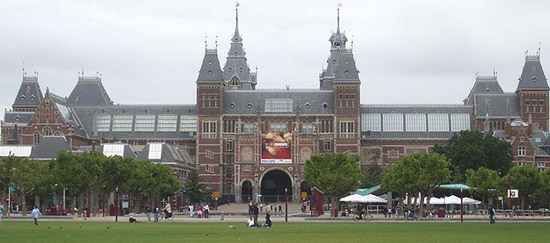 - Dutch gallery removes racist artwork titles - The Telegraph.
- LIST OF MUSEUMS IN THE NETHERLANDS - Wikipedia.
- Allard Pierson Museum - the archaeological museum of the University of Amsterdam.
- AMSTERDAM HISTORICAL MUSEUM
- AMSTERDAM TULIPMUSEUM
- ANNE FRANK MUSEUM - Amsterdam.
- CRYPTO MUSEUM - "At present we are a virtual museum in The Netherlands, that can only be visited on the internet. We do, however, regularly organize exhibitions in co-operation with other museums."
- Fries Museum - Leeuwarden. Frisian provincial museum. The Mata Hari hall is dedicated to the life of the dancer and spy, who was born in 1876 in Leeuwarden as Margaretha Zelle.
- Huis Doorn - manor house and national museum in the town of Doorn. The museum shows the early 20th-century interior from the time when former German Emperor Wilhelm II lived in the house, and allows access to 6,500 photographs from the digitized collection of the earlier German Emperor Wilhelm II.
- Museum Boerhaave - Leiden. Museum of the history of science and medicine. The museum hosts a collection of historical scientific instruments from all disciplines, but mainly from medicine, physics, and astronomy. The museum is named after Herman Boerhaave, a Dutch physician and botanist who was famous in Europe for his teaching at Leiden and lived to a great age, receiving brilliant students from all over Europe, including Peter the Great, Voltaire and Linnaeus.
- MUSEUM VAN LOON - Amsterdam.
- REMBRANDT HOUSE - Amsterdam.
- RIJKSMUSEUM - Museumplein, Amsterdam.
- Teyler's Museum - Haarlem. The oldest museum in the Netherlands, open to the public since 1784.
Romania
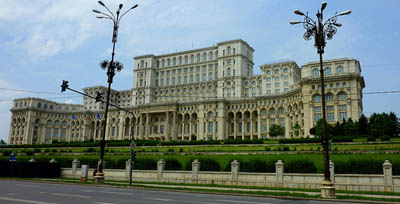 - LIST OF MUSEUMS IN Romania - Wikipedia.
- Bran Castle - "Dracula's Castle." Bran, near Braşov. The distance to Bucharest is of less than 200 km.
- Palace of the Parliament | Palatul Parlamentului - completed in 1997. Multi-purpose building containing both chambers of the Romanian Parliament. According to the World Records Academy, the Palace is the world's largest civilian building with an administrative function, most expensive administrative building and heaviest building.
Russia
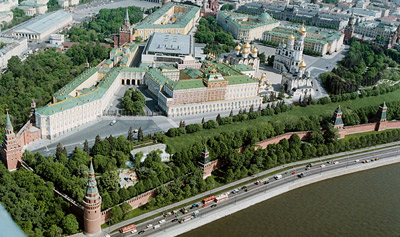 - LIST OF MUSEUMS IN RUSSIA - Wikipedia.
- RUSSIAN MUSEUMS
- Amber Room - world-famous chamber decorated in amber panels backed with gold leaf and mirrors, located in the Catherine Palace of Tsarskoye Selo near Saint Petersburg.
- BOLSHOI THEATRE - founded in 1776. Moscow.
- Catherine Palace - Saint Petersburg. It was the summer residence of the Russian tsars.
- Kazan Cathedral - Saint Petersburg.
- State Historical Museum - Moscow.
- THE MOSCOW KREMLIN
- THE STATE HERMITAGE MUSEUM - Saint Petersburg.
- Tsarskoye Selo - was the town containing a former Russian residence of the imperial family and visiting nobility, located 24 kilometers (15 mi) south from the center of Saint Petersburg.
- Verkhoturye - one of the oldest Russian settlements east of the Urals, and with forty churches in the area, Verkhoturye is considered one of the centers of Russian Christianity. Famous churches include the Trinity Church (1703—1712), Nikolay Monastery (established in 1604) with the Cathedral of Exaltation of the Holy Cross (1905—1913), and Transfiguration Church (1821). In addition, the town houses the oldest female monastery beyond Urals (established in 1621).
Scotland, U.K.
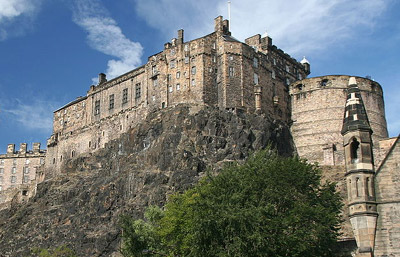 - A global first links 13 of Scotland’s Unesco cities and sites in a digital trail - "From Edinburgh to St Kilda, destinations in Scotland are being promoted as part of a sustainable tourism drive timed for COP26."
- LIST OF MUSEUMS IN SCOTLAND - Wikipedia.
- EDINBURGH CASTLE - historic fortress which dominates the skyline of the city of Edinburgh. Archaeologists have established human occupation of the rock since at least the Iron Age (2nd century AD). There has been a royal castle on the rock since at least the reign of David I in the 12th century, and the site continued to be a royal residence until the Union of the Crowns in 1603.
- National Museum of Scotland - "Our diverse collections will take you on a journey of discovery through the history of Scotland, the wonders of nature and world cultures - all under one roof."
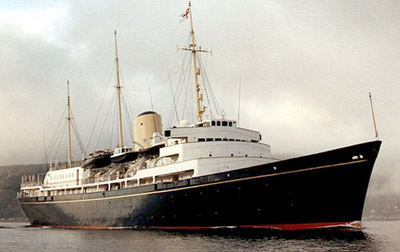 - THE ROYAL YACHT BRITANNIA - Edinburgh. "Scotland's best visitor attraction." Discover what life was like on board The Queen's floating royal residence.
Spain
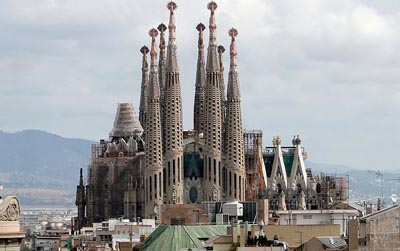 - Barcelona's famous Sagrada Familia will finally be completed in 2026 - more than 140 years after construction started, officials have confirmed. The construction of the last of six towers will mark the completion of the structure of the basilica, the organization responsible for managing the site announced last week.
- LIST OF MUSEUMS IN SPAIN - Wikipedia.
- MUSEUMS IN SPAIN BY CATEGORY
- AlcÁzar of Seville - royal palace in Seville, originally a Moorish fort. The palace is renowned as one of the most beautiful in Spain. It is the oldest royal palace still in use in Europe.
- ALHAMBRA - Granada.
- BASILICA DE LA SAGRADA FAMÍLIA - Barcelona.
- Cave of Altamira - Santillana del Mar.
 - El Escorial - historical residence of the King of Spain, in the town of San Lorenzo de El Escorial, about 45 kilometres (28 miles) northwest of the capital, Madrid. It is one of the Spanish royal sites and functions as a monastery, basilica, royal palace, pantheon, library, museum, university and hospital.
- FIGUERES DALÍ THEATRE-MUSEUM - Figueres.
- GAUDÍ CENTRE - Reus.
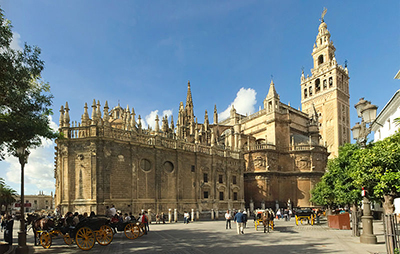 - Seville Cathedral - Seville, Andalusia. The largest Gothic cathedral and the third-largest church in the world. It is also the largest cathedral in the world, as the two larger churches, the Basilica of the National Shrine of Our Lady of Aparecida and St Peter's Basilica, are not the seats of bishops.
Sweden
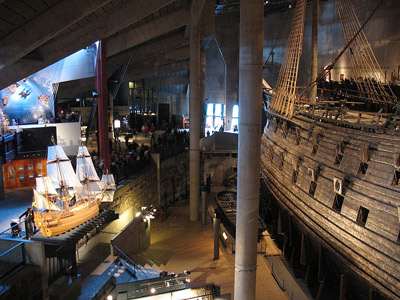 - List of castles & palaces in Sweden - Wikipedia.
- LIST OF MUSEUMS IN SWEDEN - Wikipedia.
- MUSEUMS IN SWEDEN BY CATEGORY
- 007 JAMES BOND MUSEUM - Emmabodavägen 20, 382 45 Nybro.
- ABBA THE MUSEUM - Stockholm.
- ARMY MUSEUM - Stockholm. One of Sweden’s best historical museums, with exhibitions on three spacious floors.
- Disgusting Food Museum - "80 of the world's most disgusting foods." Adventurous visitors will appreciate the opportunity to smell and taste some of these notorious foods. Do you dare smell the world’s stinkiest cheese? Or taste sweets made with metal cleansing chemicals? Carlsgatan 12, 211 20 Malmoe, Sweden.
- Drottningholm Palace - on UNESCO's World Heritage list. It is the most well-preserved royal castle built in the 1600s in Sweden and at the same time is representative of all European architecture for the period.
- Gripsholm Castle - on the shores of Lake Mälaren. Known as Gustav Vasa's castle, as it was he who built the castle here in 1537. See the Swedish State's collection of portraits – featuring prominent Swedes from the days of Gustav Vasa to present day musician and composer Benny Andersson.
- Kalmar Castle - castle in the city Kalmar in the province of Småland.
- Riddarholmen Church - the final resting place of the Swedish kings & Stockholm's only preserved medieval monastery church.
- Royal Palace of Stockholm
- STRINDBERG MUSEUM - Stockholm.
- The Treasury - Stockholm. Here you can see Gustav Vasa´s sword of state, Erik XIV´s crown, sceptre & orb and Lovisa Ulrika´s crown.
- VASA MUSEUM - Djurgården, Stockholm. The museum displays the only almost fully intact 17th century ship that has ever been salvaged, the 64-gun warship Vasa that sank on her maiden voyage in 1628.
Turkey
 - Ayasofya: the mosque-turned-museum at the heart of an ideological battle - "Turkey’s decision to secularise the building was symbolic - so is Erdoğan’s support for reversing it."
- Hagia Sophia: Former Istanbul museum to open for Muslim worshippers - "Friday prayers are to be held at Istanbul's iconic Hagia Sophia building for the first time since the celebrated museum was turned back into a mosque."
- Hagia Sophia: Secrets of the 1,600-year-old megastructure that has survived the collapse of empires - "Whether you’re a believer or not, visiting Hagia Sophia is a spiritual experience. The architectural genius of this place of worship - which was built as a church in 537CE before its conversion into a mosque in 1453 - creates an illusion of vastness. It feels like the space starts to expand when you enter the building."
- LIST OF MUSEUMS IN TURKEY - Wikipedia.
- CHORA MUSEUM - Istanbul. Considered to be one of the most beautiful surviving examples of a Byzantine church.
- Gaziantep Museum of Archaeology - Gaziantep. Best known for its collection of mosaics, most of which were excavated from the ancient Roman city site of Zeugma. Other exhibits include a collection of paleolithic artifacts; items from a Bronze Age necropolis; Hittite, Persian, Roman, Hellenistic, and Commagene artworks and glassware; Ottoman and Islamic coins and medallions; and the skeleton of a mammoth.
- Hagia Sophia - Istanbul. Former Orthodox patriarchal basilica (church), later a mosque, and now a museum in Istanbul, Turkey. From the date of its dedication in 360 until 1453, it served as an Eastern Orthodox cathedral and seat of the Patriarchate of Constantinople, except between 1204 and 1261, when it was converted to a Roman Catholic cathedral under the Latin Empire. The building was a mosque from 29 May 1453 until 1931, when it was secularized. It was opened as a museum on 1 February 1935.
- Topkapi Palace - large palace in Istanbul, that was the primary residence of the Ottoman Sultans for approximately 400 years (1465-1856) of their 624-year reign.
Vatican City
 - Vatican displays Holy Stairs for the first time in 300 years - "Visitors to Rome this Easter can have a once-in-a-lifetime experience: climbing the original stairs that Jesus is said to have walked on while on his way up to be judged by Pontius Pilate before his crucifixion."
- VATICAN MUSEUMS - Wikipedia.
- Vatican's Secret Archives no longer officially secret after renaming - "Pope says new name for trove of priceless papers will be the Vatican Apostolic Archives."
- SISTINE CHAPEL - the best-known chapel of the Apostolic Palace, the official residence of the Pope in the Vatican City. It is famous for its architecture and its decoration that was frescoed throughout by Renaissance artists including Michelangelo, Sandro Botticelli, Pietro Perugino, Pinturicchio, Domenico Ghirlandaio, and others. Under the patronage of Pope Julius II, Michelangelo painted 1,100 m2 (12,000 sq ft) of the chapel ceiling between 1508 and 1512. The ceiling, and especially The Last Judgment (1535–1541), is widely believed to be Michelangelo's crowning achievement in painting.
- VATICAN MUSEUMS - official site.
|
|








